The Best Guitar Effects Pedals of All Time
From fuzzes and flanges, to distortions and delays, these are some of the best effects pedals ever created.
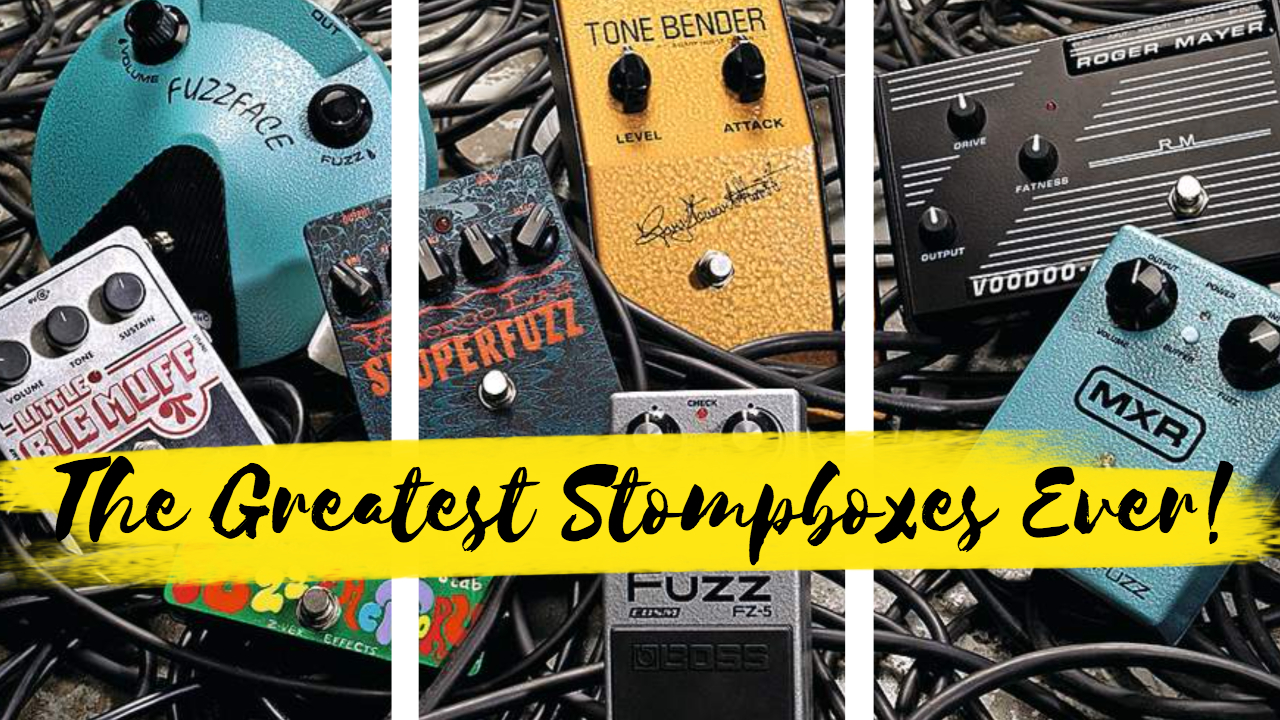
Most guitarists still get a little weak in the knees upon discovering a new stompbox. In recent years, the pedal population has grown exponentially to the point where vintage models now commonly share 'board space with classic reissues, modern boutique units, mass-produced newbies, and hi-tech gizmos. When it comes to stompboxes we've never had it so good! So take a spin through this awesome compilation of tone machines, grab some inspiration, and see how many you can check off from your own collection...
ADA Flanger
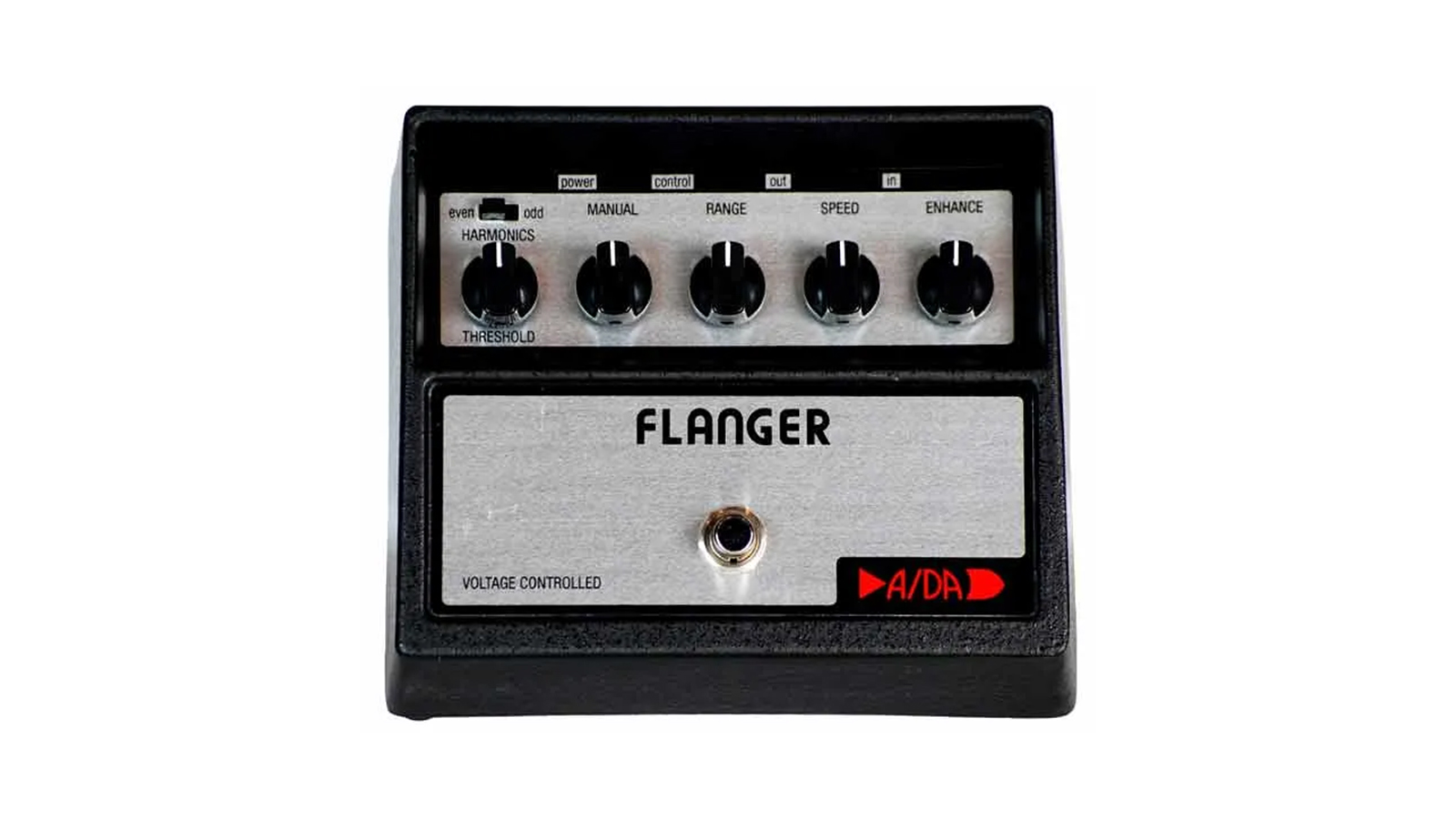
Debut: 1977
With its 35-to-1 sweep ratio – which was more than double that of the MXR Auto Flanger and Tycobrahe Pedalflanger – the ADA could sweep an audio signal over the horizon faster than you could say “voltage controlled clock oscillator.” When it comes to extreme flange effects, the ADA is still unbeatable.
Analog Man King of Tone (V4)
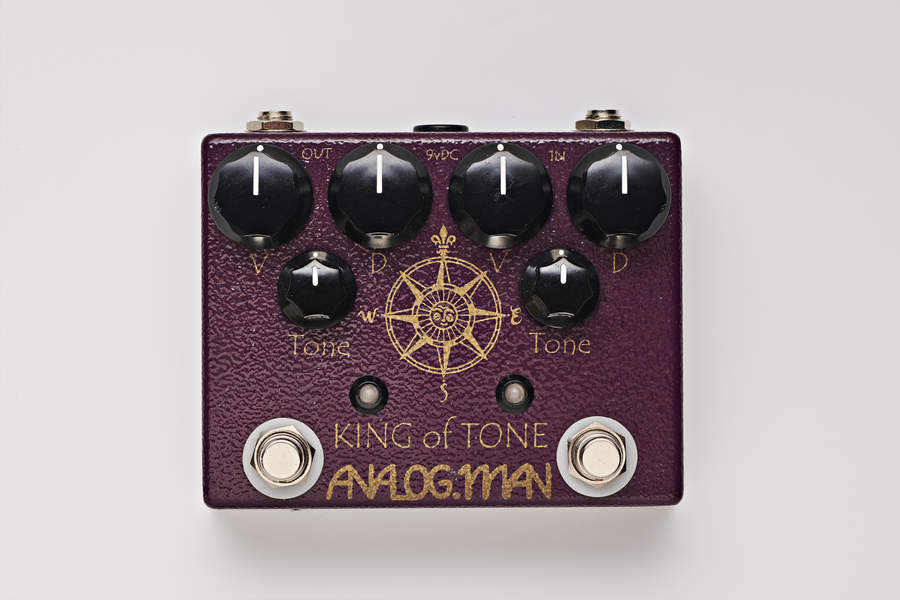
Debut: 2006
Developed in collaboration with The Band guitarist Jim Weider in the early 00s the first King of Tone pedals were sold in 2003, and in 2005 Analog Man updated the design to include six knobs. This version (4) is essentially two overdrive pedals in one unit. With its ability to add natural tube-style overdrive to the signal while retaining the subtle nuances and character of both musician and instrument (including the amp) the King of Tone is regarded as a true boutique masterpiece. It’s years-long waiting list proves just how in demand these pedals remain.
Arbiter Fuzz Face
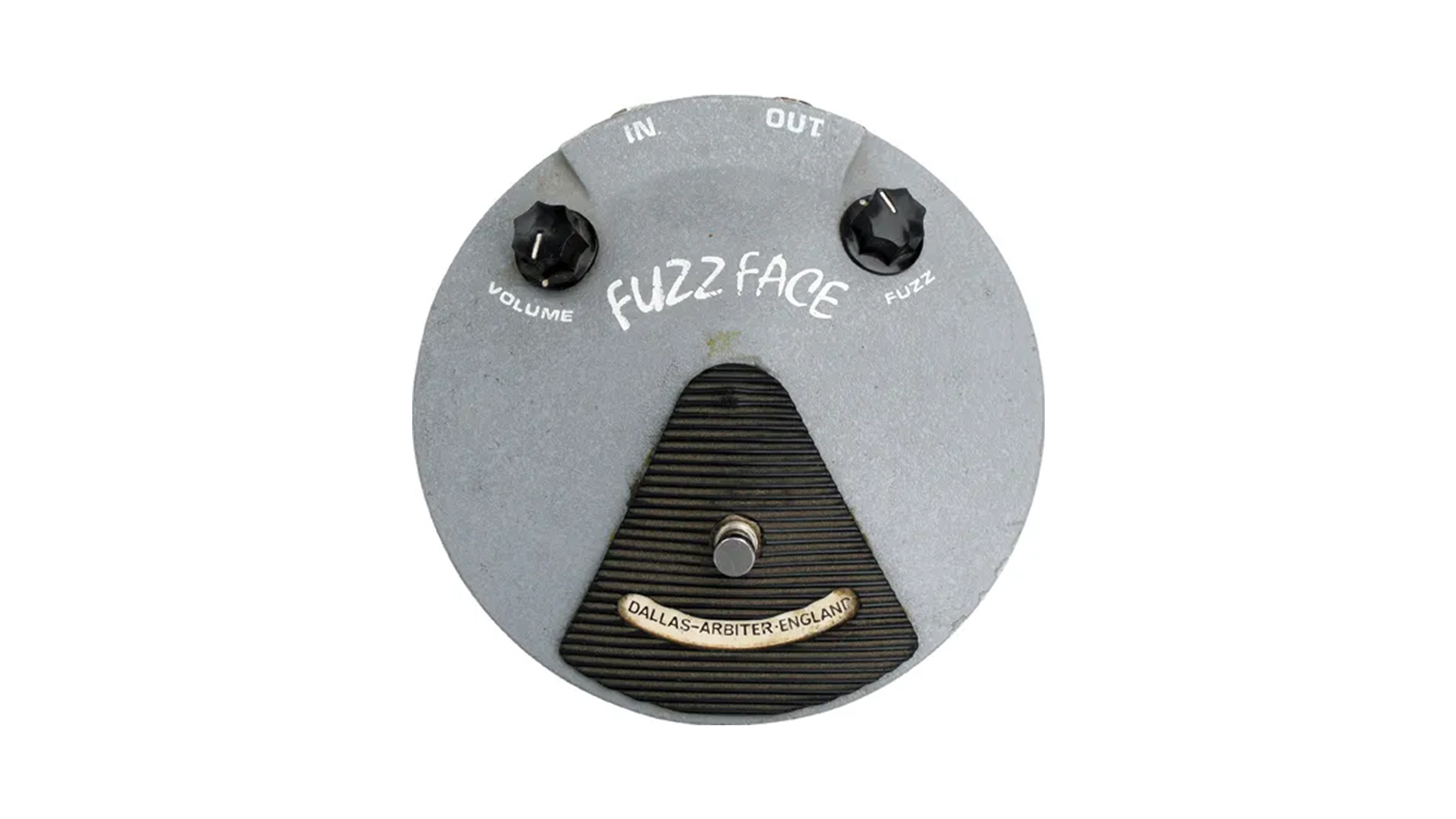
Debut: 1966
You’d have to have been frozen in a glacier for the past 3,000 years to not know about the Fuzz Face or the left-handed Strat player who made it famous. Introduced in 1966 by London’s Arbiter Music, the dynamic-sounding Fuzz Face represents mankind’s best use of two transistors, four resistors, and three capacitors.
Bixonic Expandora

Debut: 1995
Surfacing at the height of the mid-’90s stompbox boom, the Expandora made friends fast with its rich fuzz sounds and its ability to be optimized for distortion or overdrive via a pair of internal dip switches. Billy Gibbons’ onstage use of multiple Expandoras (most of which weren’t hooked up to anything) helped make the effect an overnight success.
Boss CE-1 Chorus Ensemble
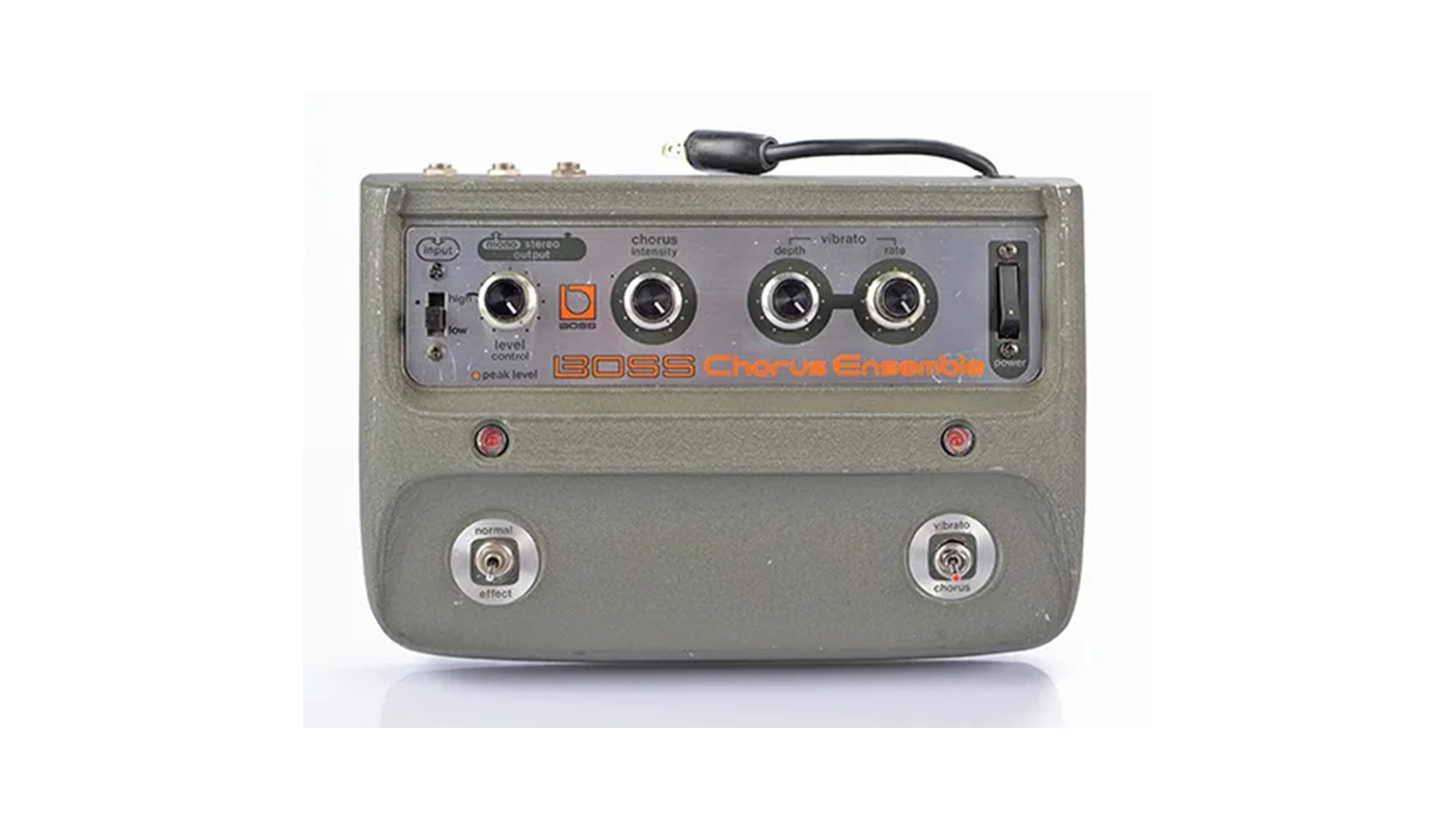
Debut: 1976
Famous for its lush analog sound, the stereo CE-1 set the standard by which all chorus pedals are judged. With its dual footswitches (chorus/vibrato and effects bypass), input-level switch, chorus intensity and vibrato depth and speed controls, the CE-1 was also one of the most flexible of the breed.
All the latest guitar news, interviews, lessons, reviews, deals and more, direct to your inbox!
Boss DM-2 Delay
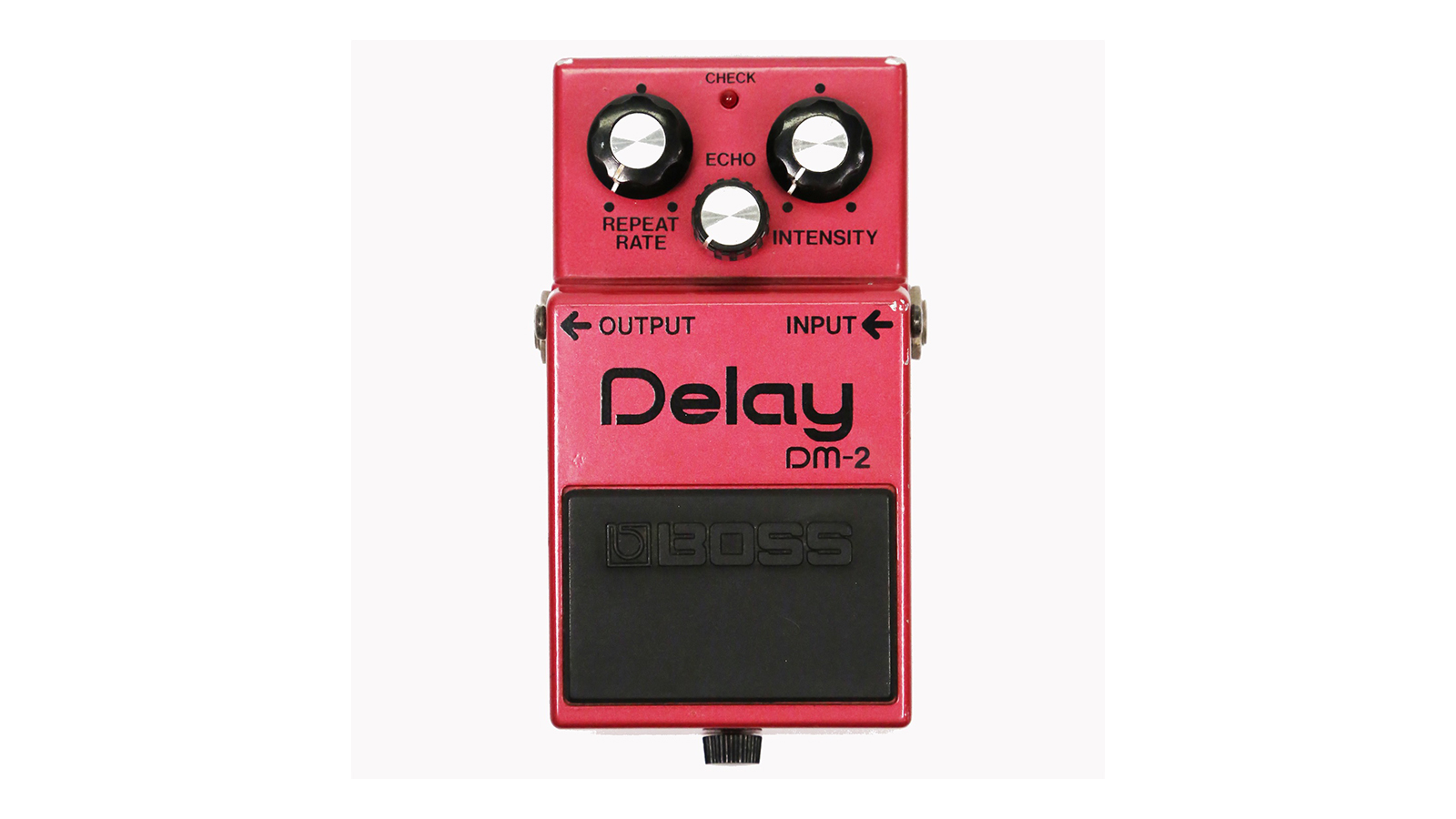
Debut: 1981
Highly regarded for its tape-flavored tones, this classic analog delay pedal specializes in short echoes (33ms to 330ms), and features echo, intensity, and repeat rate controls. Cranking the intensity knob makes for a pretty rad effect in itself!
Buy: Boss DM2
Boss DD-3 Digital Delay
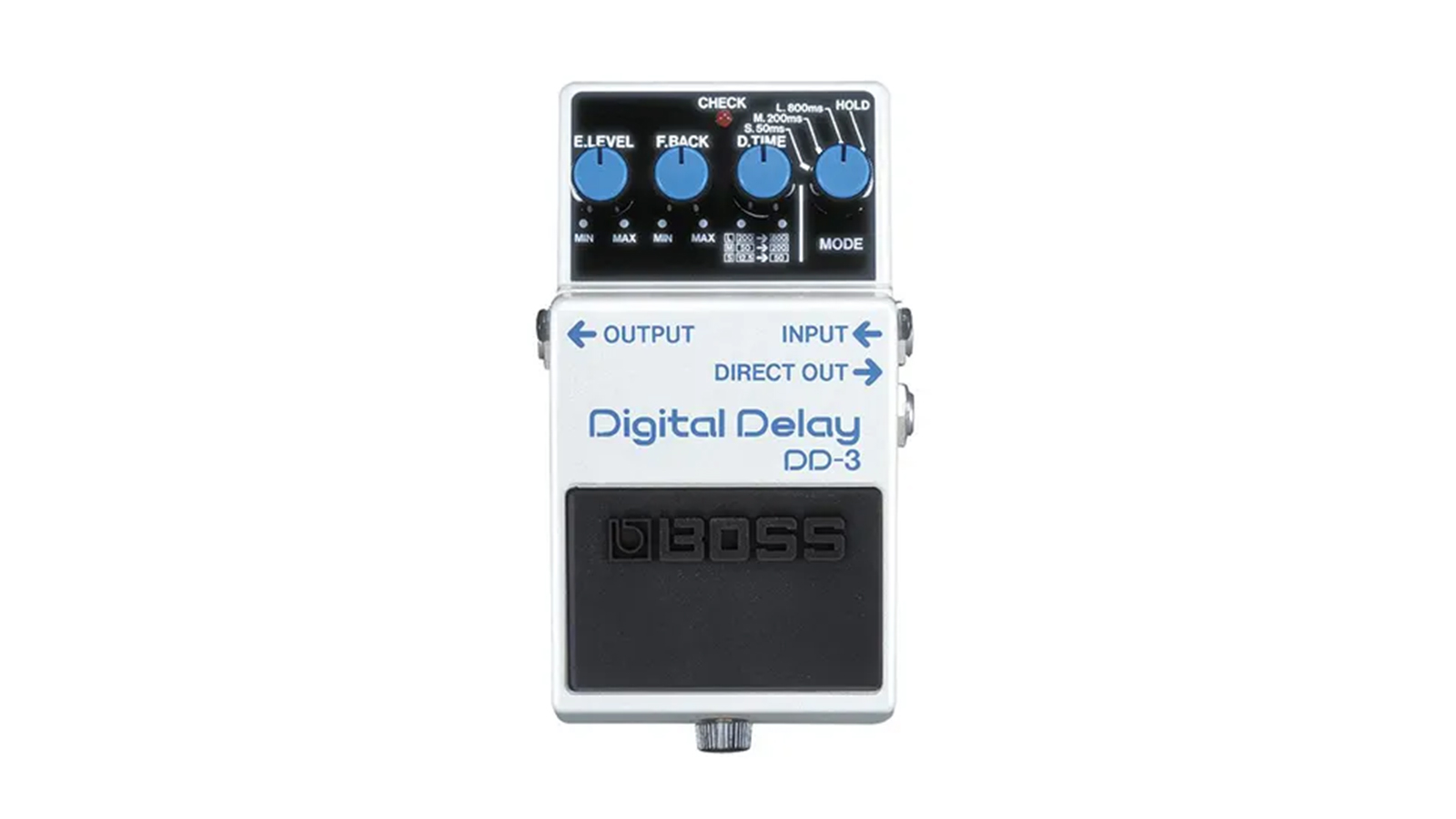
Debut: 1986
This ultra-popular digital pedal gave guitarists far greater sonic flexibility than was possible with analog technology. Clear sounding, quiet, and delivering up to 800ms of delay, the DD-3 was an immediate hit. Features include dual outputs and a handy hold function that will loop a delayed part infinitely.
Buy: Boss DD-3
Boss DS-1 Distortion

Debut: 1979
This ultra-classic distortion box is known for its warm, tube-like growl and excellent dynamics and punch. If you could have only one distortion box, you couldn’t go wrong with a DS-1.
Buy: Boss DS-1
Boss HM-2 Heavy Metal
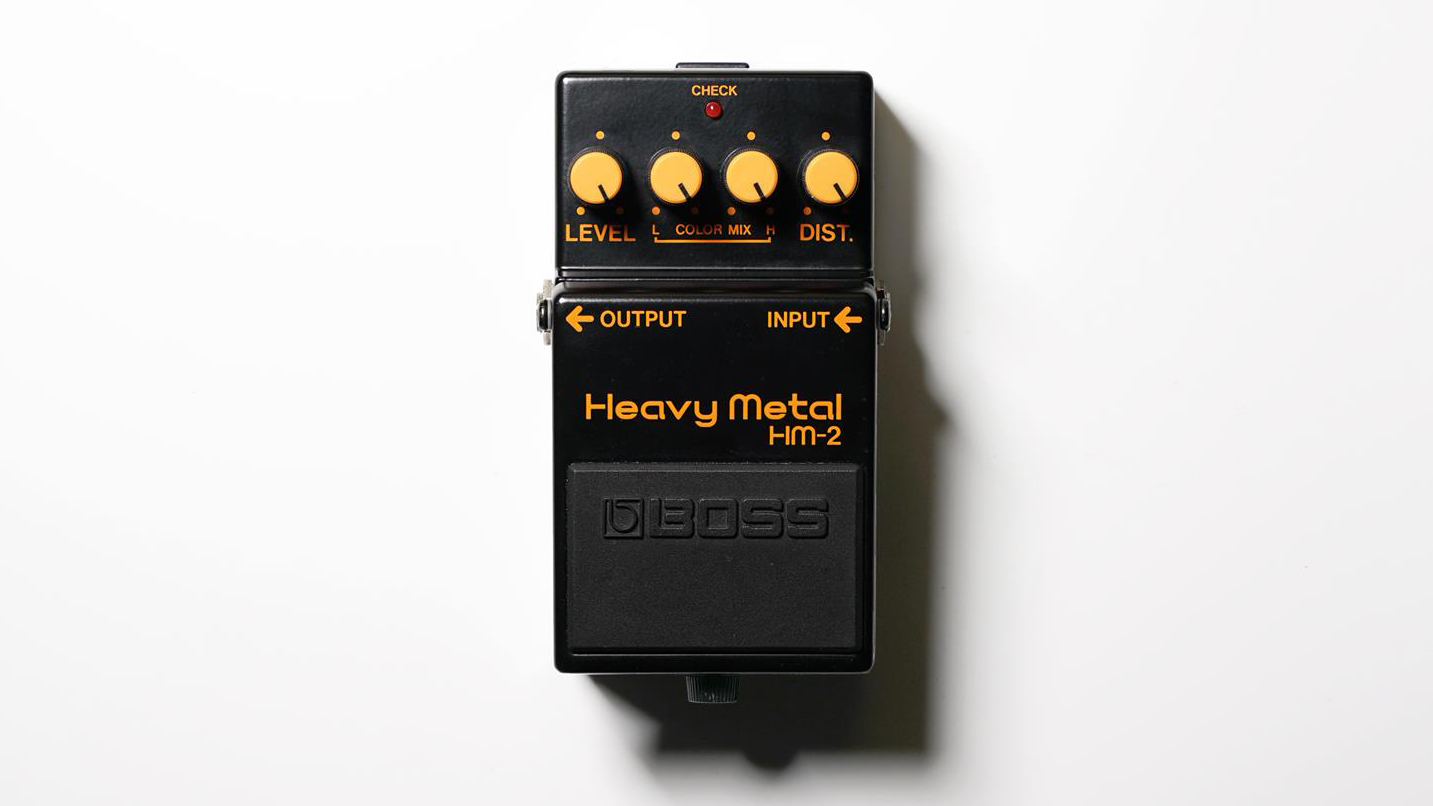
Debut: 1983
No sooner had Boss discontinued the HM-2 Heavy Metal in the early 90s than it was adopted as the de facto standard distortion box for Swedish death metal bands such as Entombed, Dismember and Grave. The bands’ producer Tomas Skogsberg, father of the ironically-named “Sunlight Sound”, repeatedly called upon the HM-2’s brutal, ripping distortion to create some of the darkest-sounding records ever made. In acknowledgement of its legacy, Boss released the Waza Craft HM-2W Heavy Metal in 2021.
Boss MT-2 Metal Zone

Debut: 1991
Packing furious gain and powerful EQ, the MT-2 is well equipped for scorching lead tones and gut-shaking, modern-metal chunk.
Buy: Boss MT-2
Colorsound Overdriver

Debut: 1972
Boosted grind is the forte of this great-sounding, British-made overdrive. Equipped with drive, treble, and bass controls, the Overdriver is ideal for making even clean amps perform very dirty tricks – just ask Jeff Beck.
Demeter Tremulator
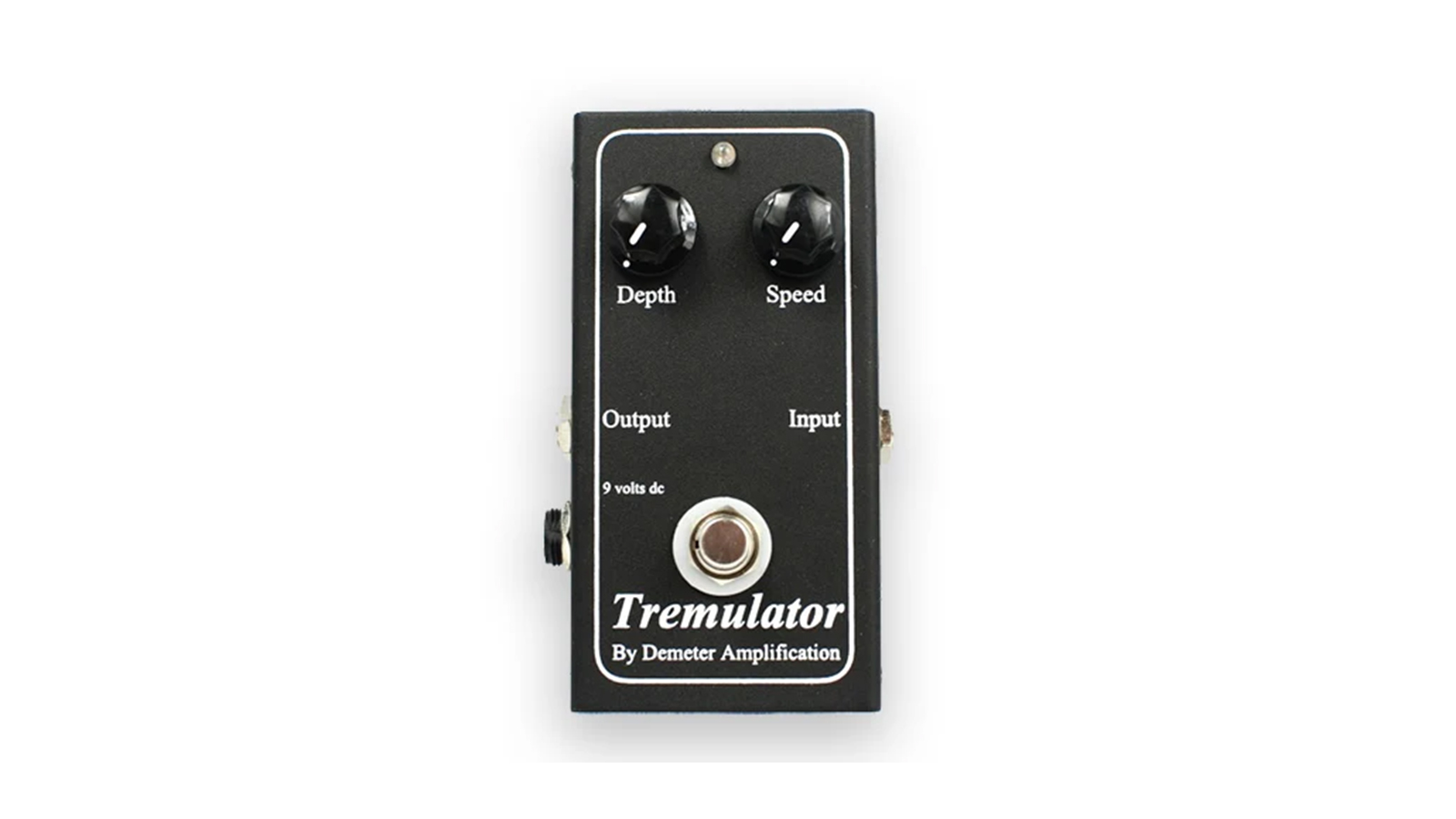
Debut: 1982
Designed to deliver soft, amp-style tremolo with no volume losses or unwanted coloration, the compact Tremulator needs only speed and depth controls to yield smooth, Fender-style pulse.
Guyatone Flip Series VT-X Vintage Tremolo
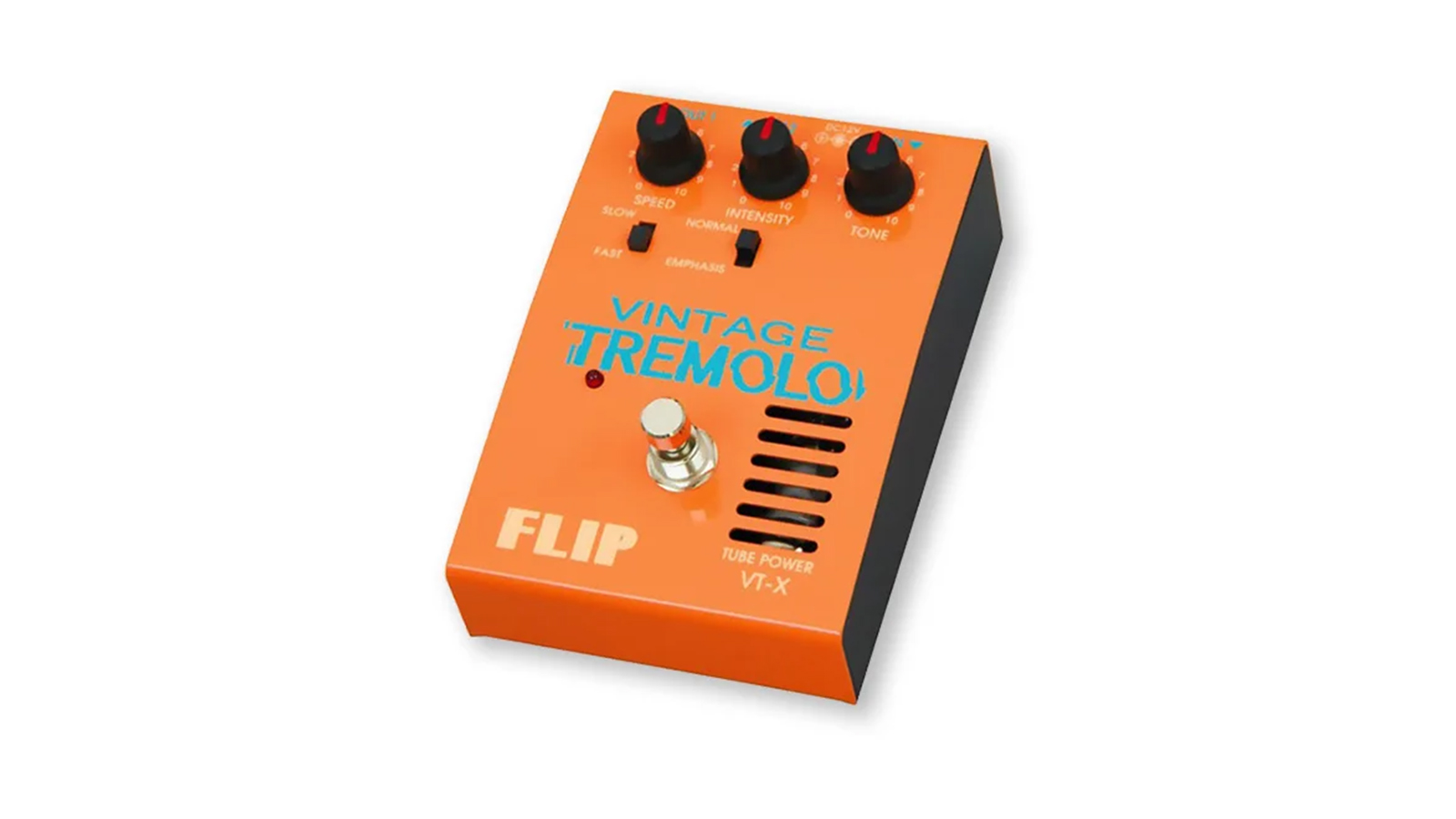
Debut: 1999
The VT-X is a fat-sounding, tube-powered tremolo that offers a wide range of trem speed, as well as a bevy of controls. Along with intensity, speed, and tone knobs, the unit sports a slow/fast range switch and an Emphasis function that adds bite to the tones without taking the warm, amp-like undulations straight to the chopping block. The VT-X features dual outputs and is powered by a 12-volt AC adapter. Put it last in line and dig what it does for your tone!
DigiTech Whammy
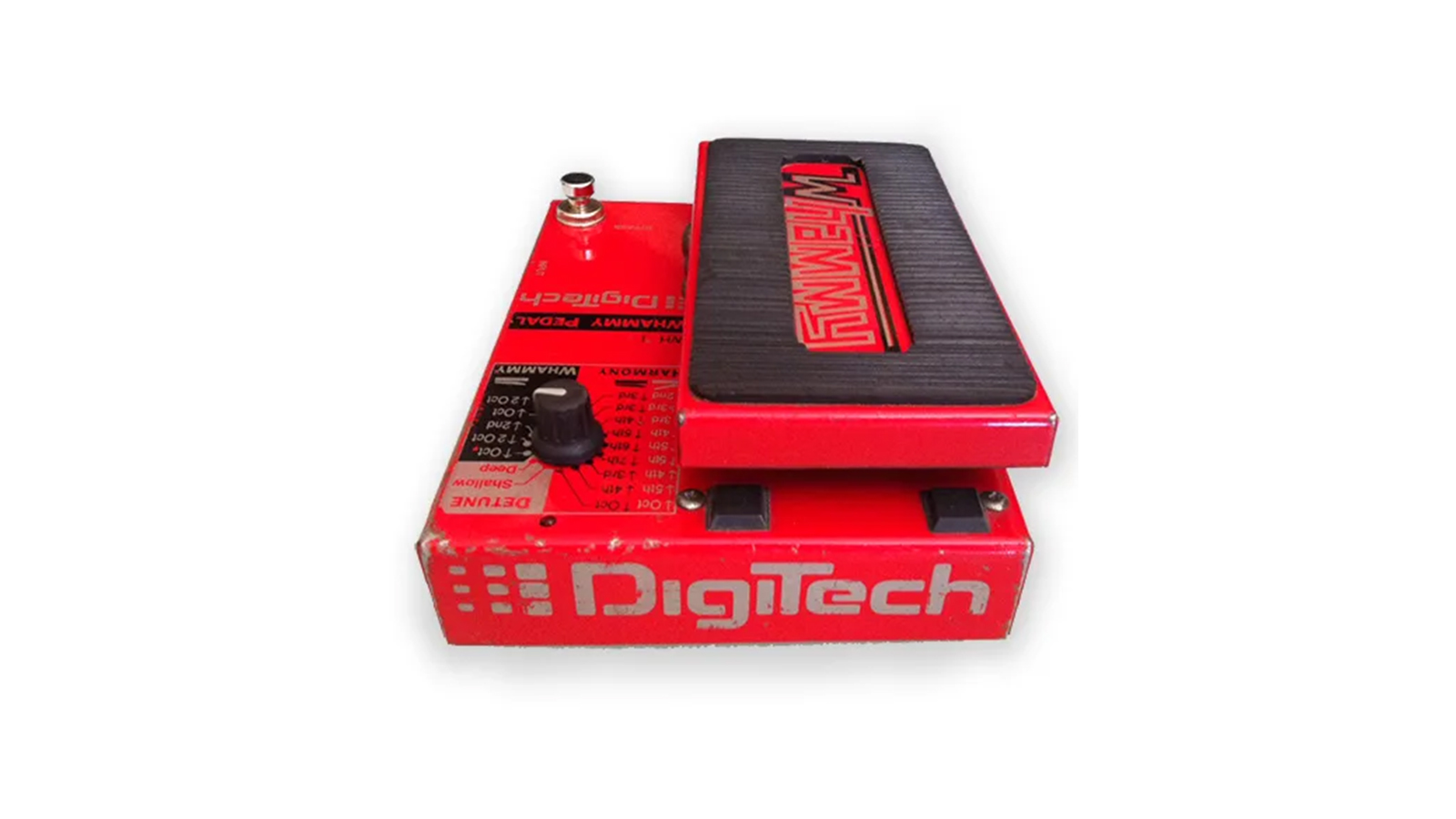
Debut: 1991
This 11-year-old audio acrobat is currently performing its digital wang-bar tricks, chorus-like manual detuning, and pedal-controlled interval morphing for a generation of nu-metal players. Even jazzers such as John Scofield and Jim Hall have grooved on this wild pedal. If you’re itching to get down with something spicier than an octave fuzz, but not as diabolical as a ring-modulator, the Whammy is a great middle ground.
Dunlop 535Q Wah
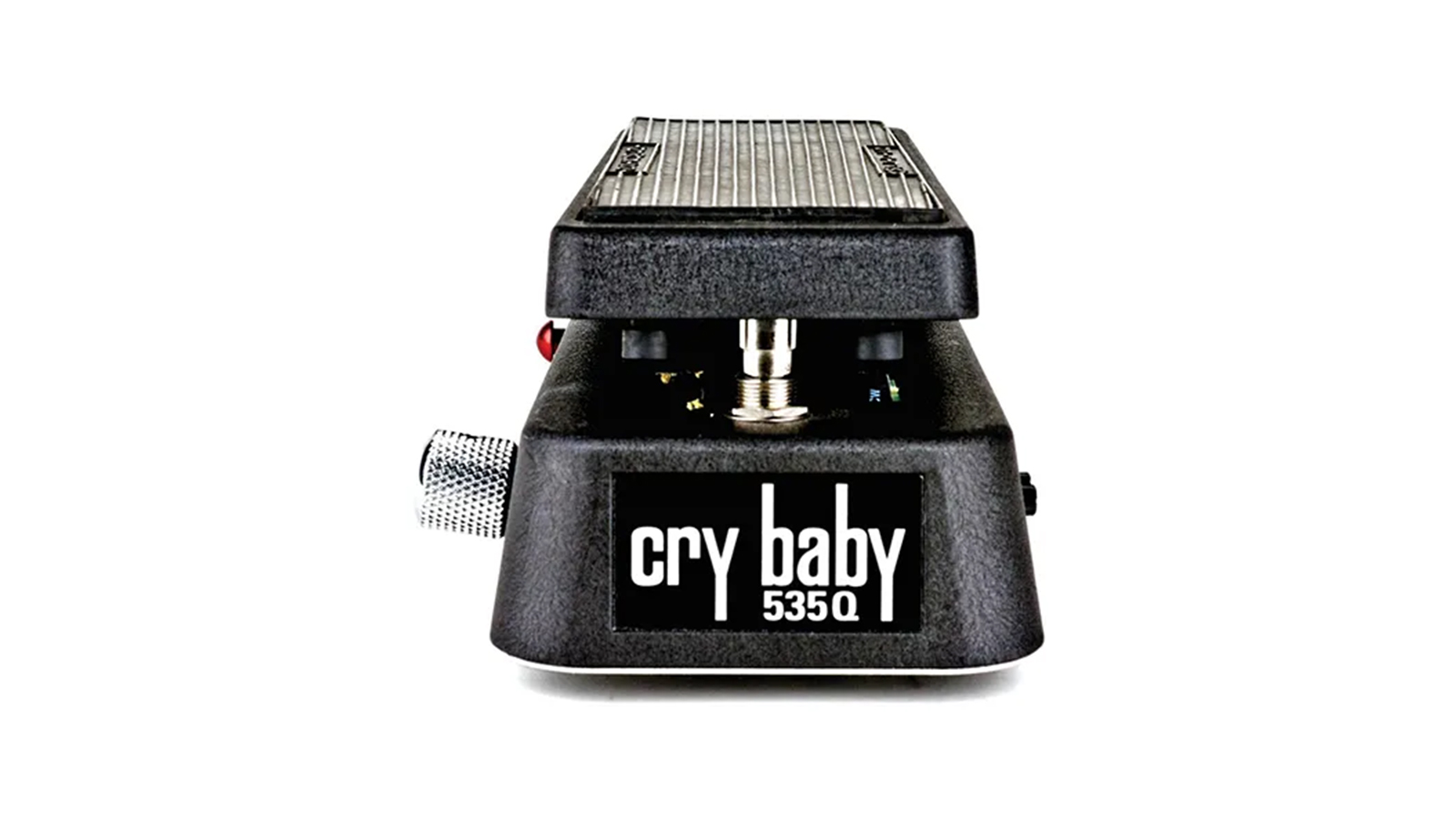
Debut: 2001
The 535Q is like having several wah pedals in one. Its multitude of functions (which include a 6-position wah range switch, a wah fine-tune control, a boost on/off switch, and “Q” and volume trimmers) may invite option anxiety, but they give the 535Q the flexibility and power to field everything from funk to metal.
Buy: Dunlop 535Q Wah
EarthQuaker Devices Dispatch Master
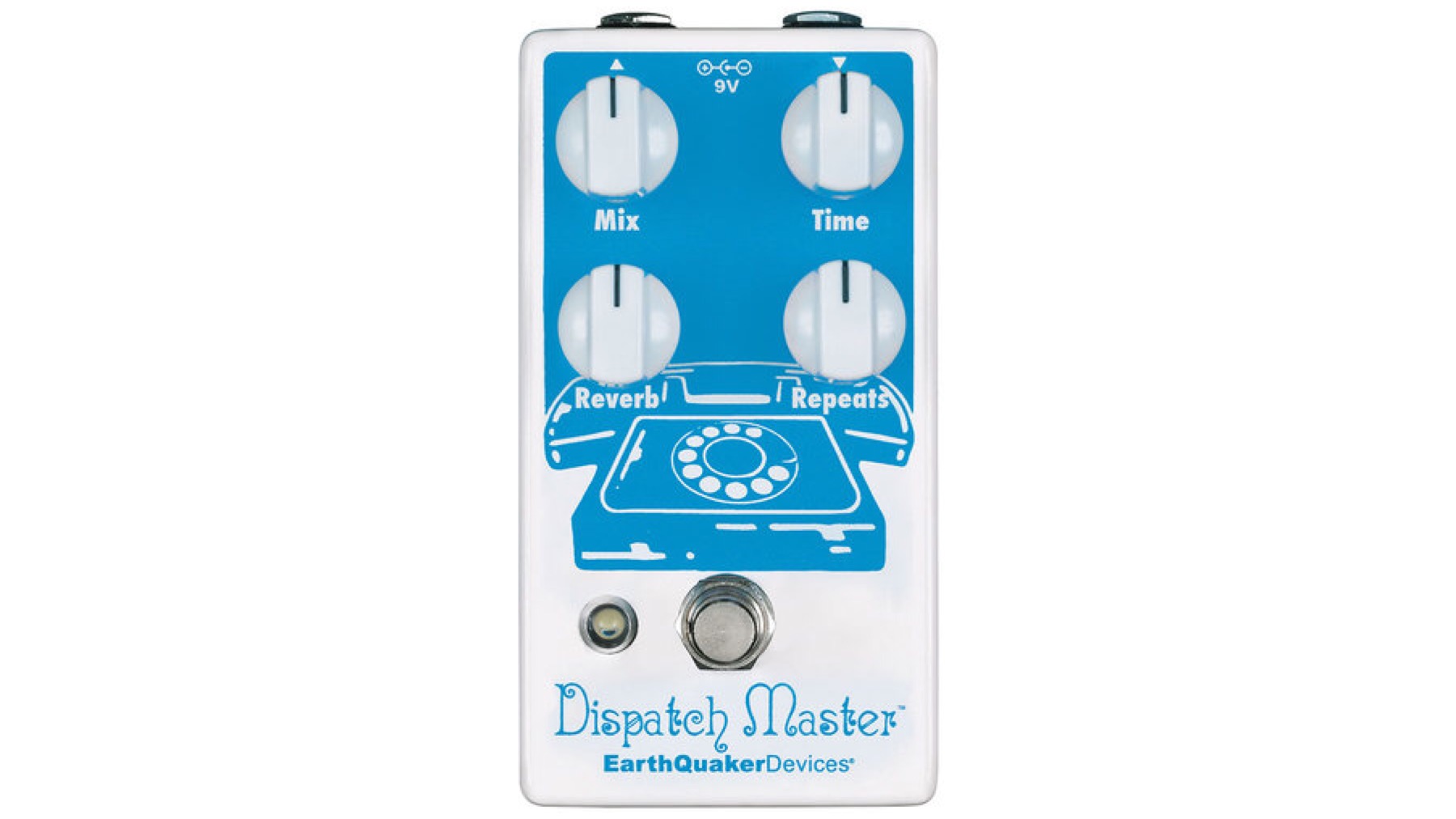
Debut: 2011
EarthQuaker Devices’ Dispatch Master melds separate delay and reverb effects into one compact pedal. Back in 2011, there were relatively few pedals which combined both effects and the Dispatch Master soon made a name for itself by becoming the Ohio firm’s best-selling stompbox. With a useful Mix (wet/dry blend) control, a maximum delay time of 1.5 seconds, and the ability to turn either effect off entirely this pedal is a neat little toolbox of tasteful ambience. In fact, it’s hard to find a bad sound!
Buy: EarthQuaker Devices Dispatch Master
Electro-Harmonix 16-Second Digital Delay

Debut: 1982
Electro-Harmonix introduced a ton of revolutionary pedals in the ’70s and early ’80s, and one of the most adventurous was the 16-Second Delay. Able to record parts on the fly, and then replay them at the touch of a button, this early digital sampler opened the door to onstage looping, and it would become a key element in the textural styles pioneered by Robert Quine and Bill Frisell.
Electro-Harmonix Deluxe Memory Man
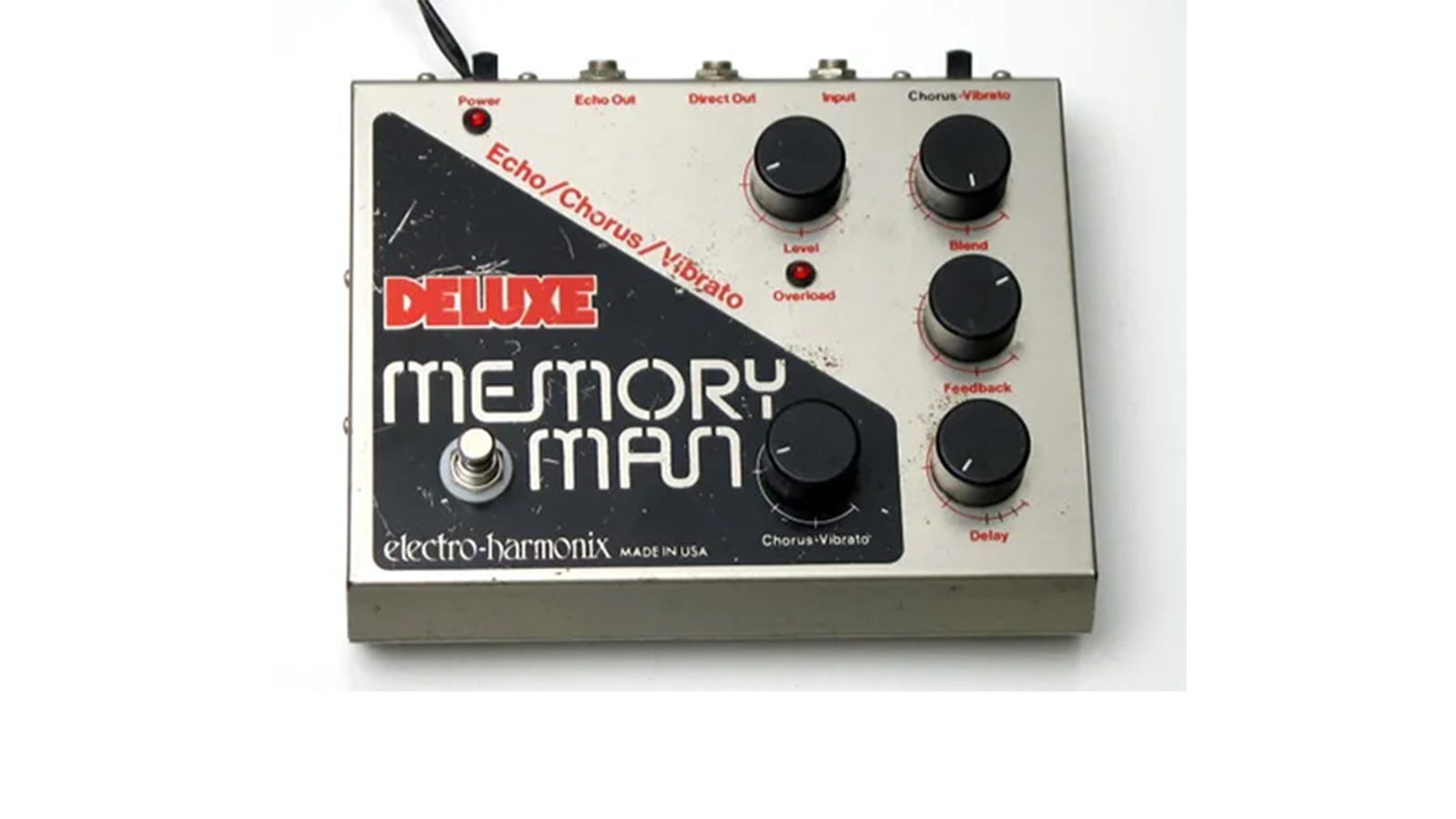
Debut: 1976
Famous for its warm, tape-like delays and detailed chorusing (owing to the fact that only the feedback signal was chorused, thus preserving the integrity of the dry signal), this classic chorus/echo/vibrato unit stands out as one of the major reasons so many guitar players still freak at the mere mention of the word “analog.”
Buy: Electro-Harmonix Deluxe Memory Man
Electro-Harmonix Big Muff

Debut: 1971
Though not quite the distortion-free sustainer the original EH ads cracked it up to be, the Big Muff’s soft-clipping and treble-rolloff circuitry yielded smooth, singing tones that were way more tube-like than any fuzzbox could deliver.
Buy: Electro-Harmonix Big Muff
Electro-Harmonix Electric Mistress

Debut: 1977
The Electric Mistress is a pretty unique sounding animal that’s less of a flange/chorus box and more of a spacey detuning machine that doubles as a portal into the mind of Robert Fripp. Using the Filter Matrix switch to disengage the automatic sweep lets you manually dial in metallic chimes and other strange noises.
Electro-Harmonix LPB-1

Debut: 1968
The LPB-1 wasn’t a stompbox – it plugged right into the input jack of a guitar – but this single-transistor power booster gave guitarists unprecedented powers of distortion. Able to drive even the cleanest amplifier into clipping, this tiny titan not only put Electro-Harmonix on the map, it also paved the way for the advent of high-gain amplifiers.
Buy: Electro-Harmonix LPB-1
Electro-Harmonix POG
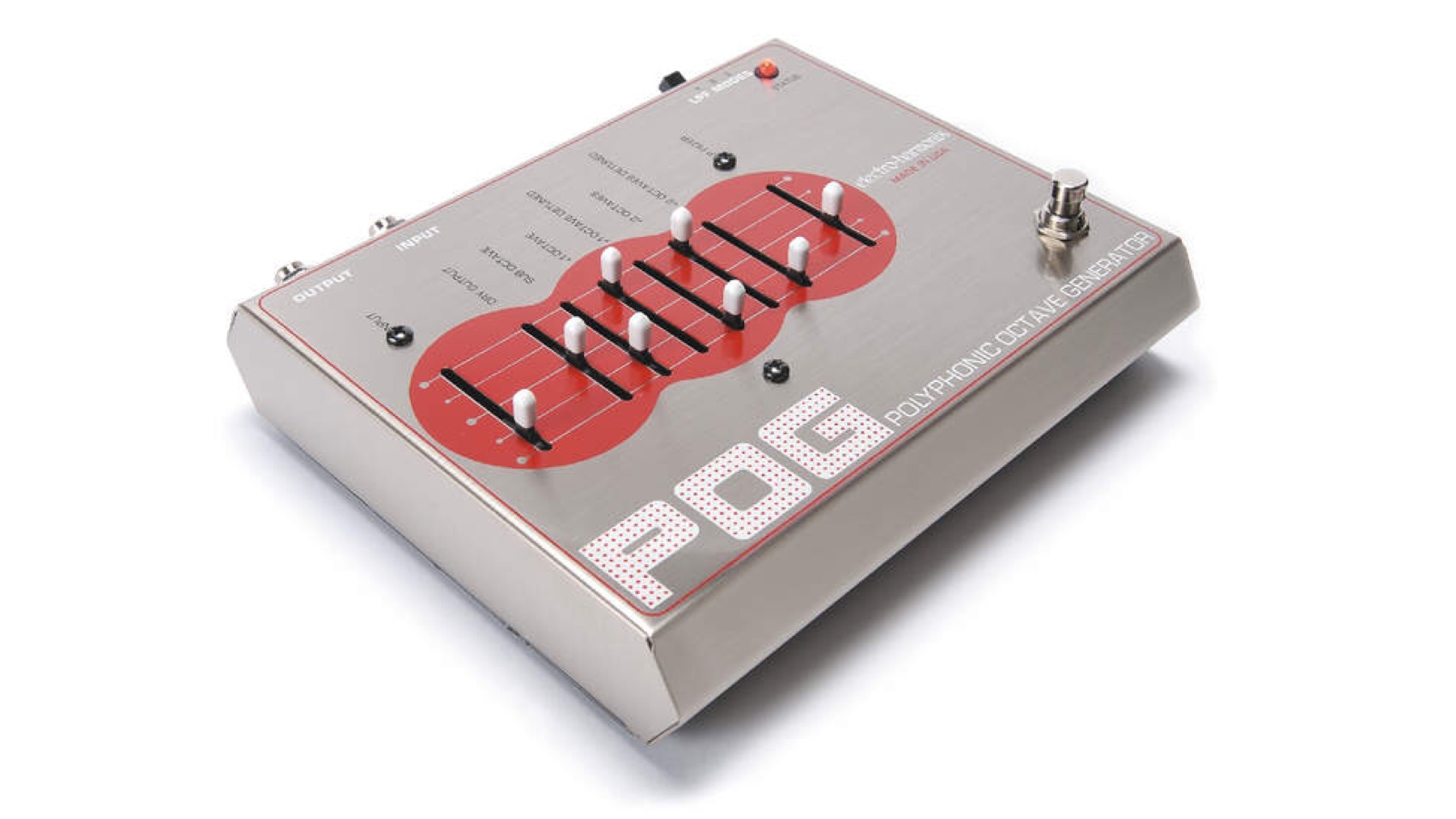
Debut: 2005
A firm favorite of Jack White and The Edge this bonkers box produces up to five additional octave sounds including sub octave, one up, two up and slightly detuned versions of both up octaves. The result is a massive organ-like noise that works, wait for it… with chords! The latest ‘2’ version is a sonic and functional upgrade. EHX also offers additional variations in the form of the Micro POG and Nano POG, along with the Nano POG/Soul Food overdrive combo pedal, the Soul POG.
Buy: Electro-Harmonix POG 2
Electro-Harmonix Small Stone
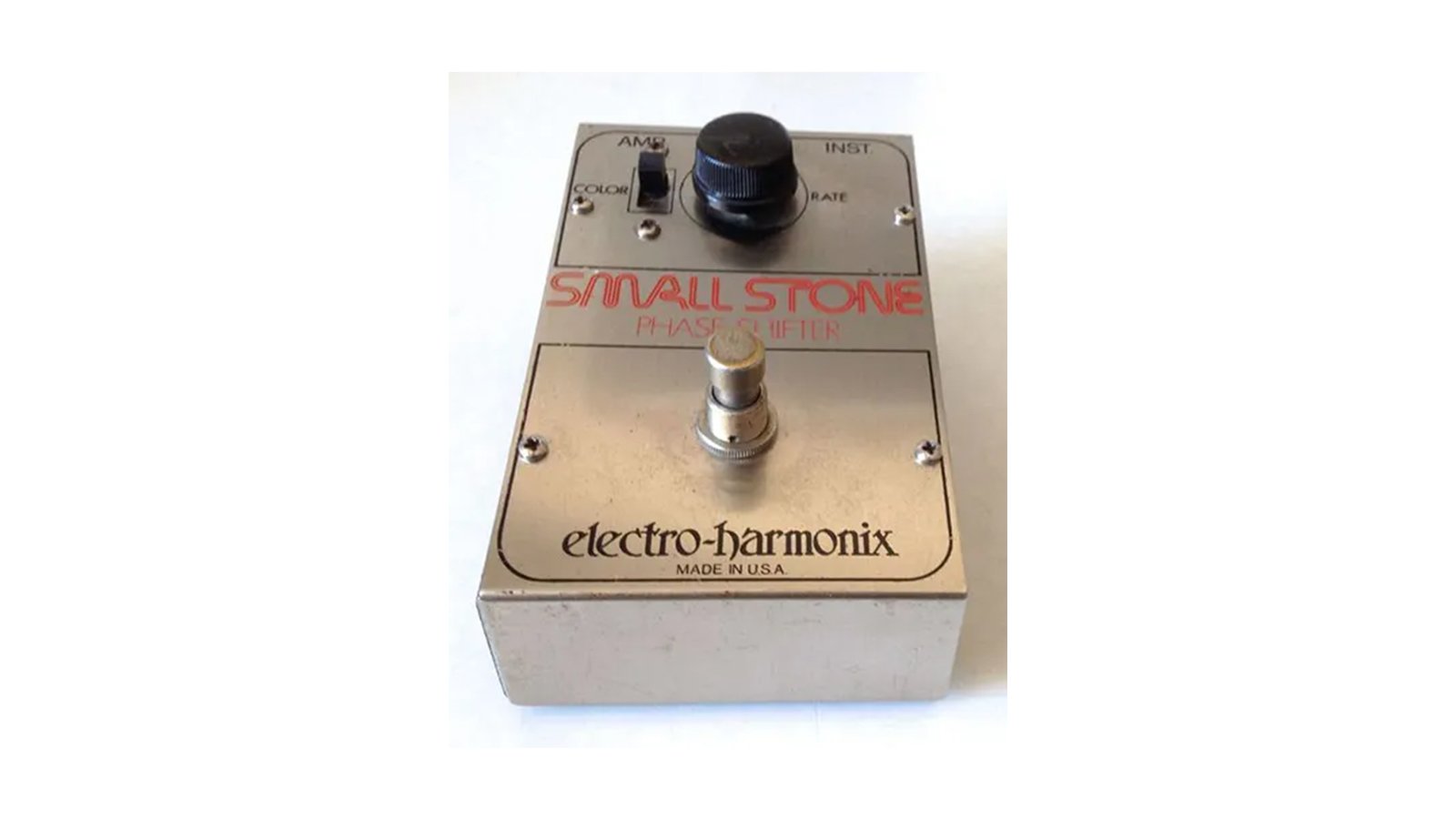
Debut: 1976
This simple phase shifter needs only a rate knob and a color switch to deliver rich, swooshy, psychedelic swirl. Costing about half as much as the MXR Phase 90, the Small Stone was an immensely popular phaser and a huge hit for Electro-Harmonix.
Foxx Tone Machine
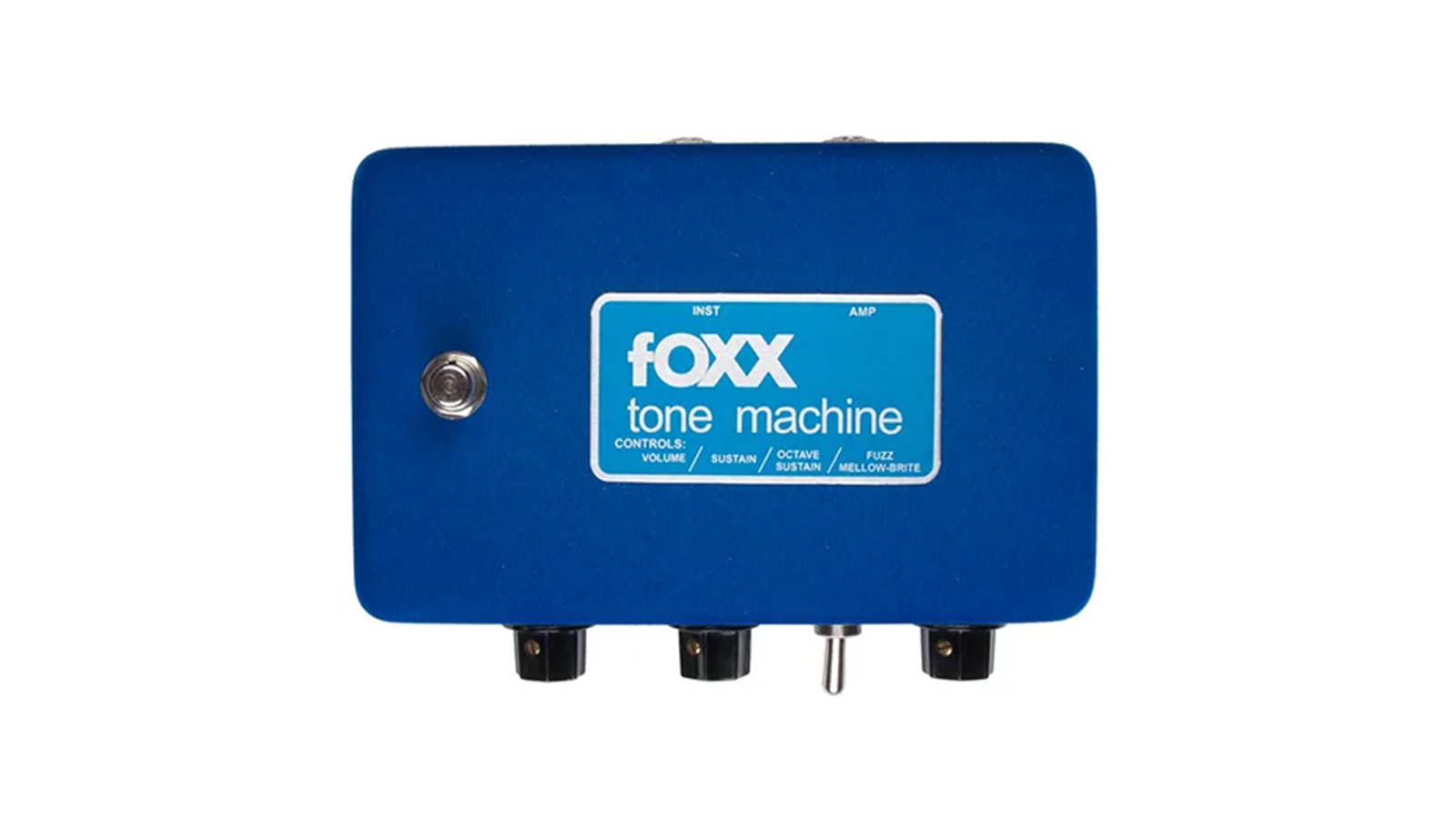
Debut: 1972
One of the hippest octave–fuzzes ever made, the Tone Machine packed tons of output and it tracked well to boot. Obtaining one of these flocked boxes will prove costly nowadays, so it’s worth noting that the Danelectro French Toast mini pedal incorporates the vintage Foxx circuit.
Fulltone Distortion Pro
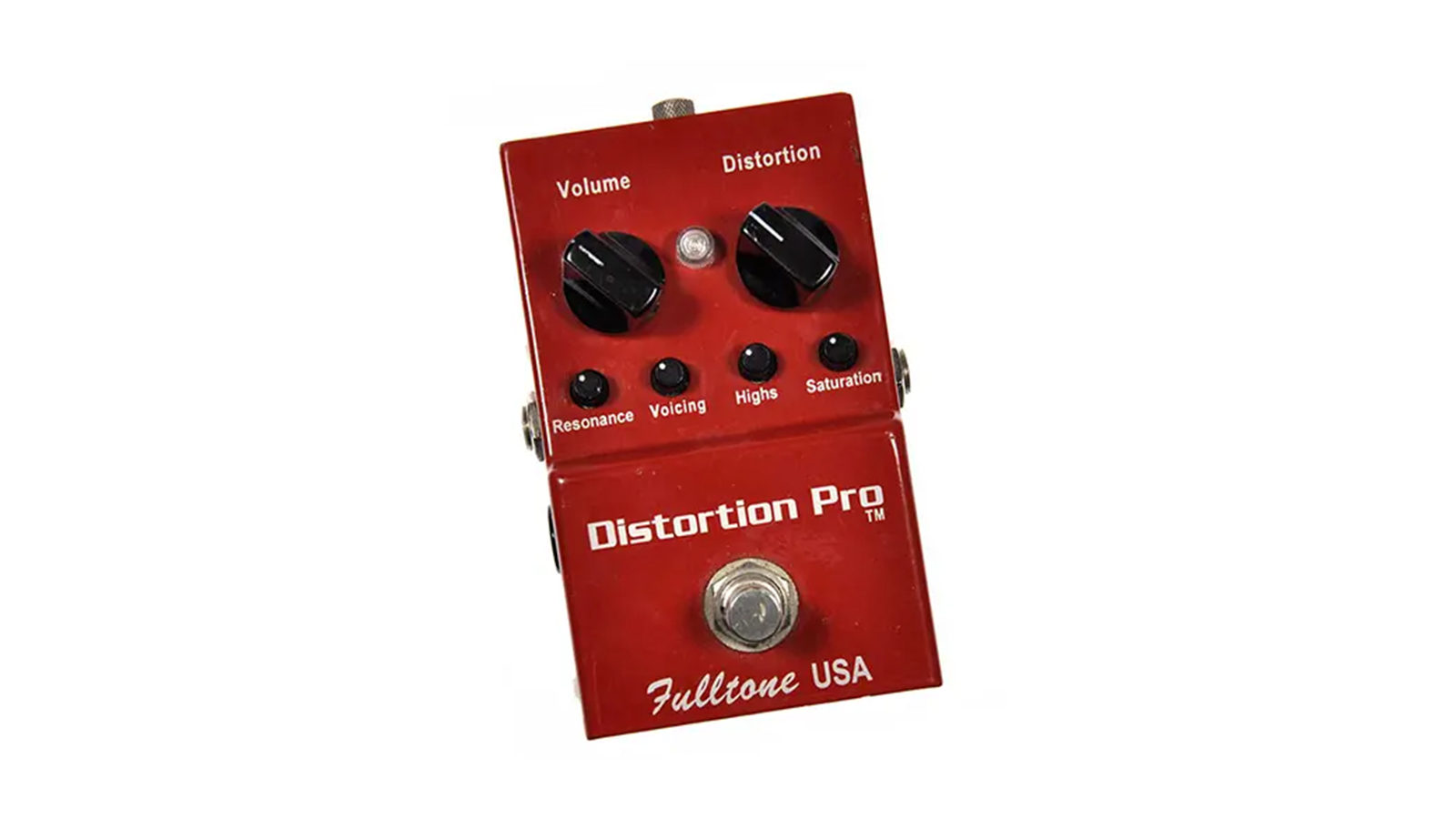
Debut: 2001
This highly evolved pedal offers thick distortion, potent output, and the ability to precisely tailor the dynamic response to suit your amplifier, playing style, and mood. And it does all this while keeping the sound of your guitar intact.
Fulltone Full-Drive 2
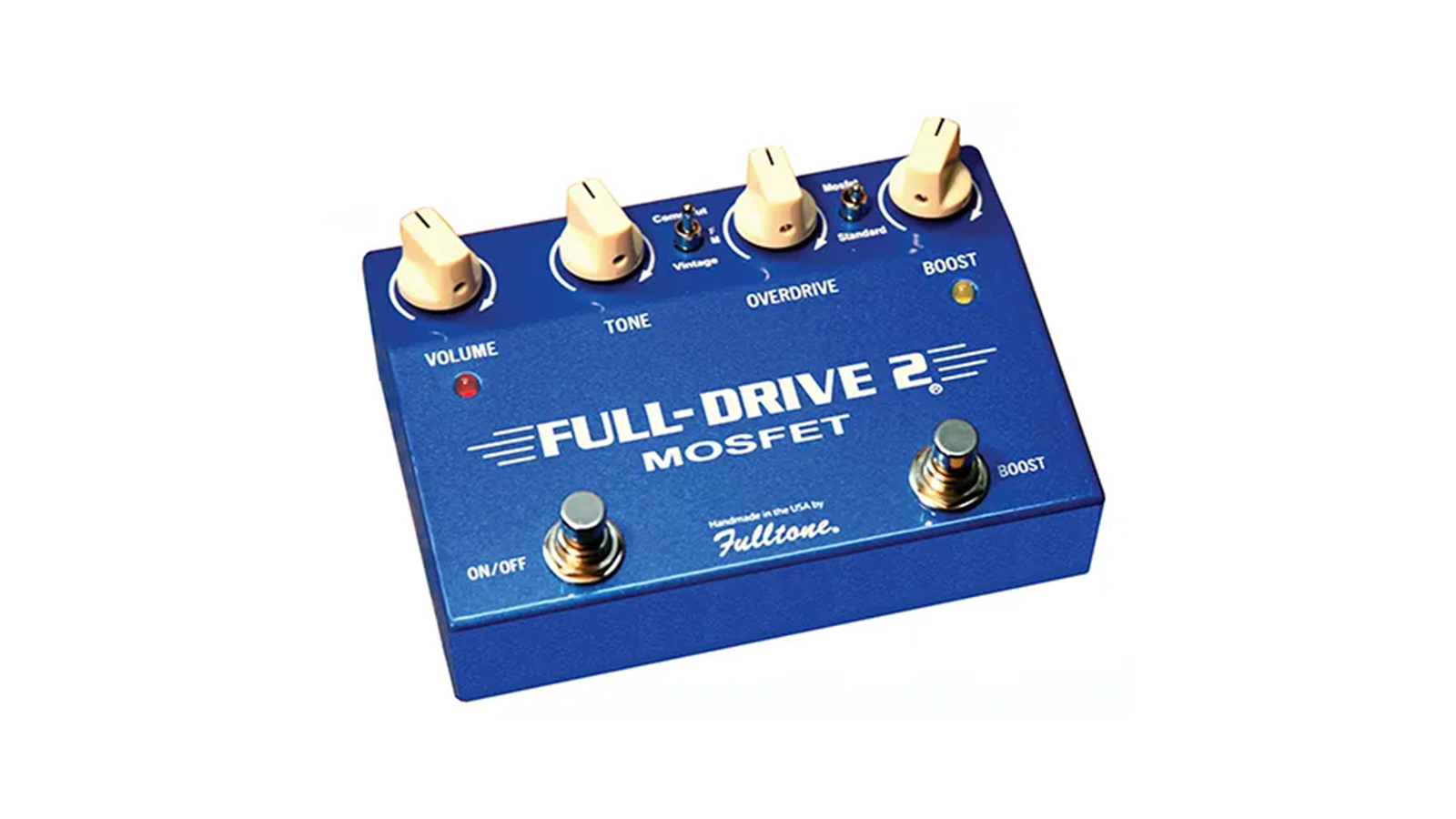
Debut: 1995
This dual-channel unit features the usual volume, tone, and overdrive controls, but adds a footswitchable boost function with a separate level control. A great-sounding overdrive in its own right, the Full-Drive 2 is particularly hip for its ability to deliver two distinct distortion flavors.
Ibanez TS-808 Tube Screamer
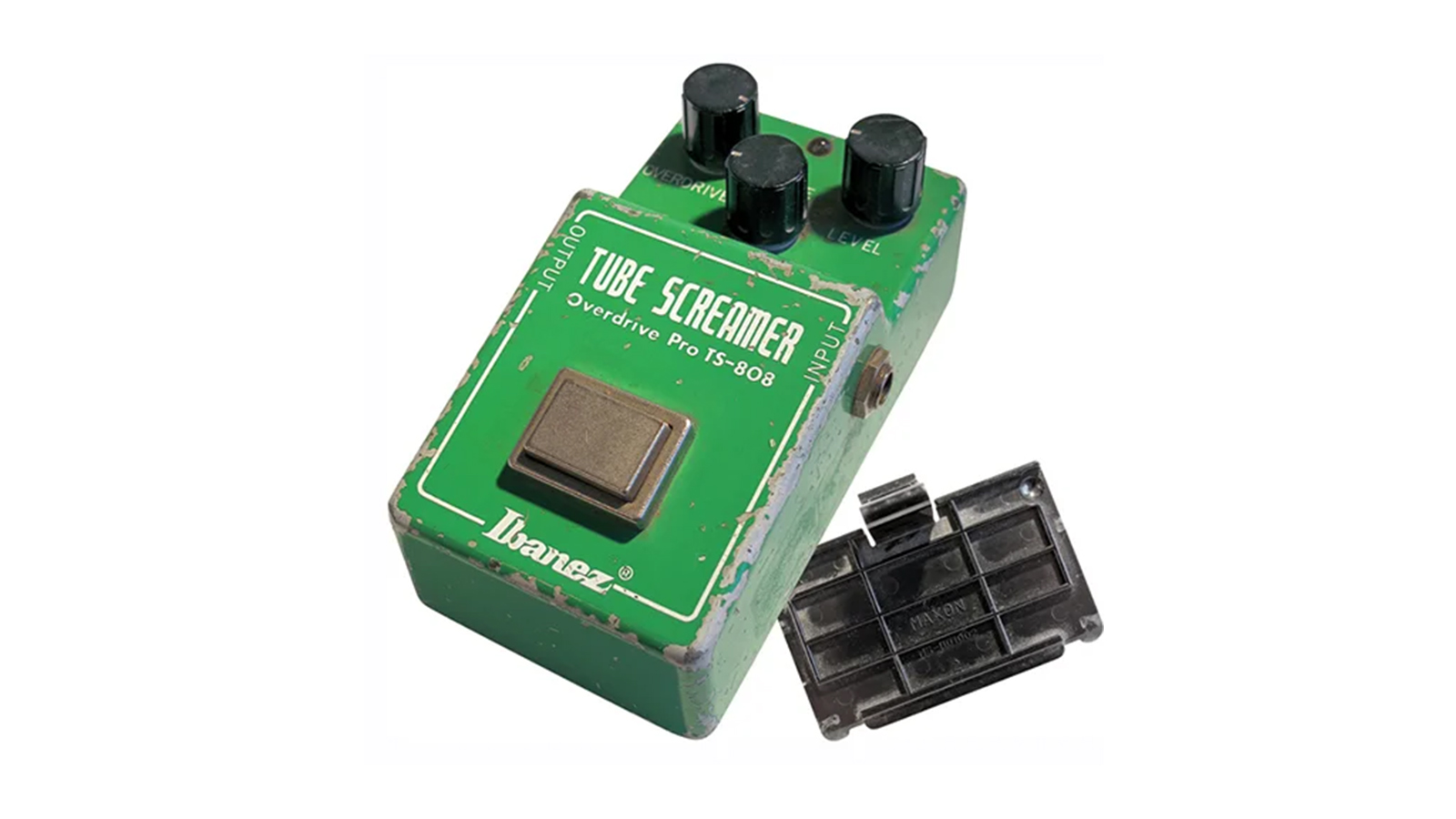
Debut: 1980
Made famous by Eric Johnson, this definitive overdrive is a close cousin of the popular TS-9. The TS-808 delivers warm, grainy distortion, plenty of output, and has a strong upper-midrange bump that colors your guitar sound considerably.
Klon Centaur
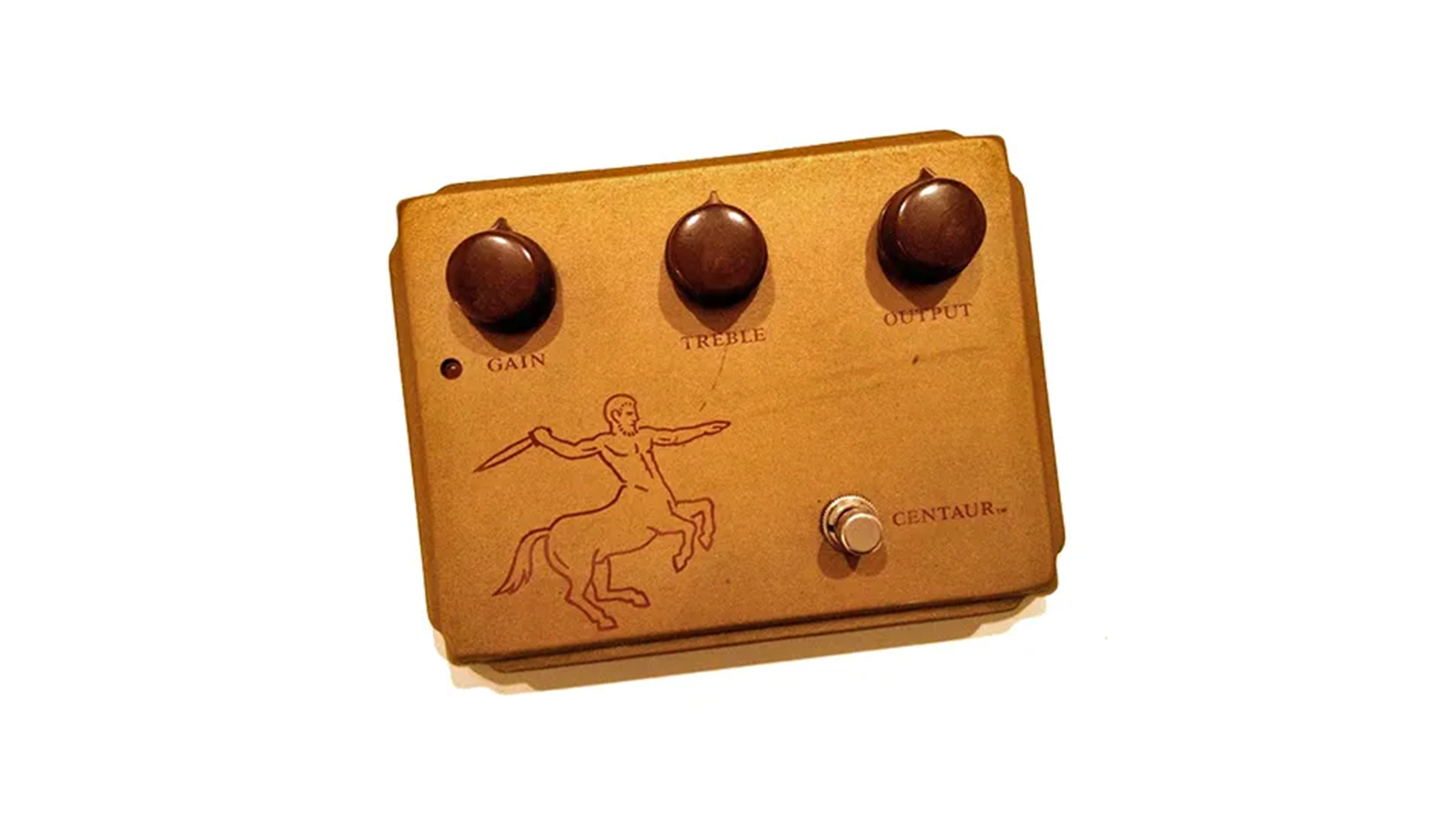
Debut: 1994
Featuring a beautiful cast-metal enclosure and a retro-cool bronze/oxblood color scheme, the Centaur is a medium-gain pedal noted for its open-sounding distortion and beefy low-end.
Line 6 DL4 Delay Modeler
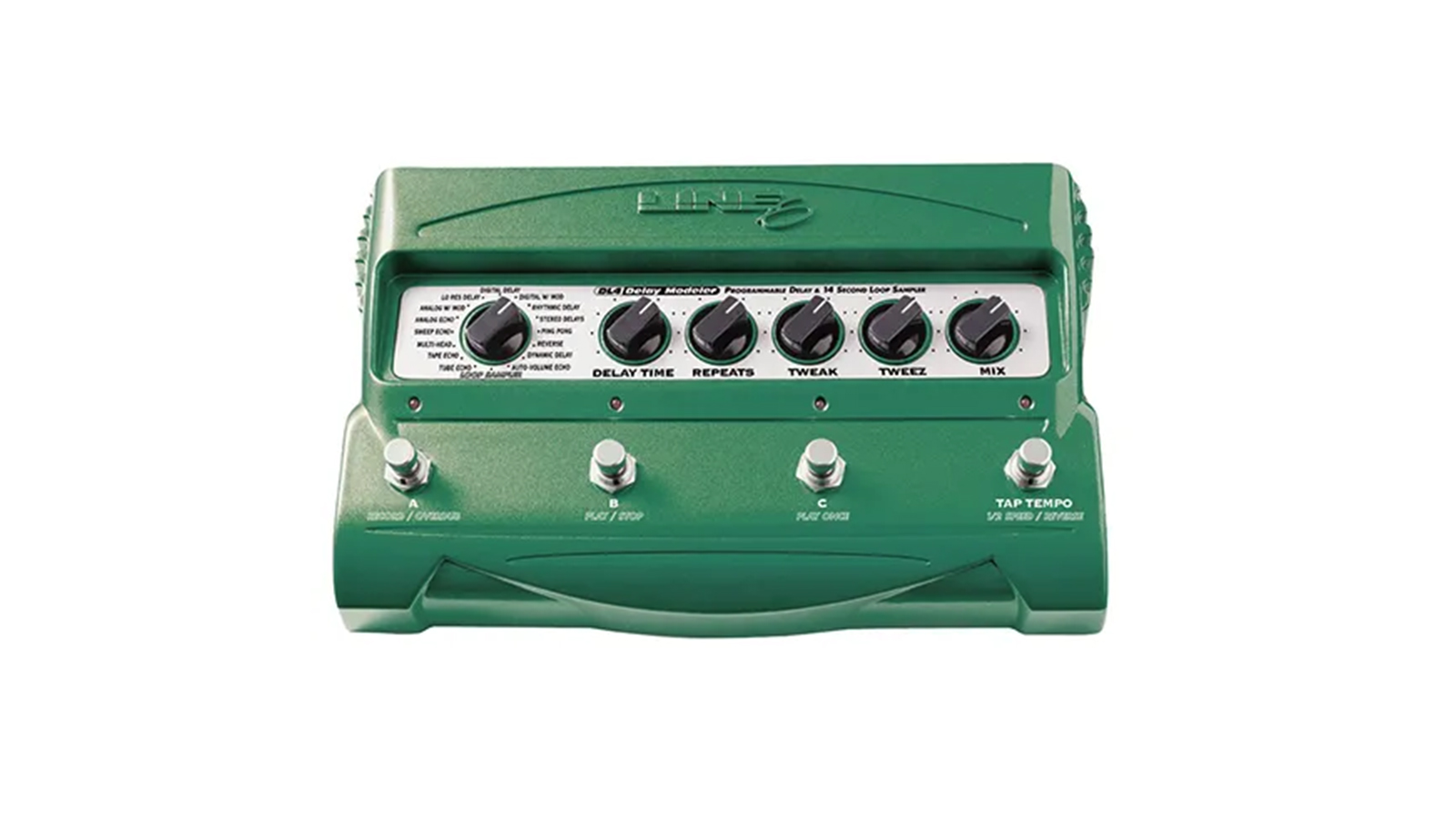
Debut: 1999
One of the first digital-modeling stompboxes, the DL4 provides simulations of 15 classic analog delays and tape-echo units. With its user-friendly interface, and smart features such as tap-tempo, stereo ins and outs, and a 14-second looping function, the DL4 is one-stop-shopping for delay freaks.
Buy: Line 6 DL4 Delay Modeler
Lovetone Meatball

Debut: 1995
Featuring four frequency ranges, multiple filter types (with depth and resonance controls), attack and decay knobs, a trigger section, and a handy effects loop, the British-made Meatball can do the funky-filter thing as readily as it dishes up animal snorts, bird whistles, insect mating calls, and endless iterations of lower-tract distress.
Maestro Fuzz-Tone
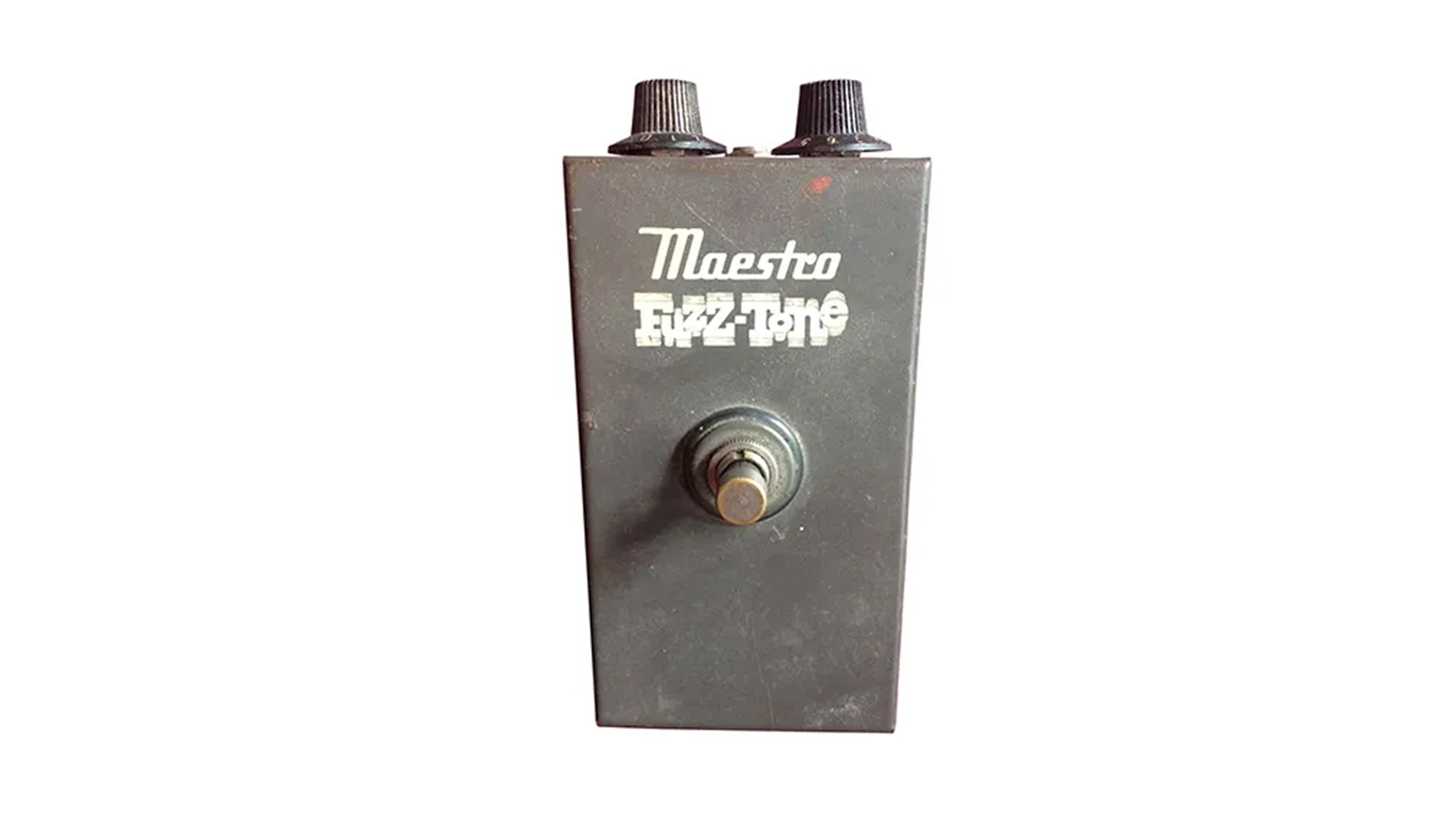
Debut: 1963
As the first commercially available fuzzbox, this wedge-shaped device added signature buzz to hundreds of ’60s-era country, pop, and rock recordings. Based on a transistor circuit cooked up by a Nashville studio engineer, the Fuzz-Tone kicked off the beginning of the stompbox revolution.
Morley Power Wah Boost

Debut: 1973
Morley broke with the wah pack by introducing a model that used a photo resistor in place of the standard potentiometer. The PWB doubled as a volume pedal, and it also featured a footswitchable, variable boost function. With its wide, smooth sweep and quiet operation, the PWB was a revolutionary design that opened the door for a slew of ever more elaborate Morley pedals.
Musitronics Mu-Tron III
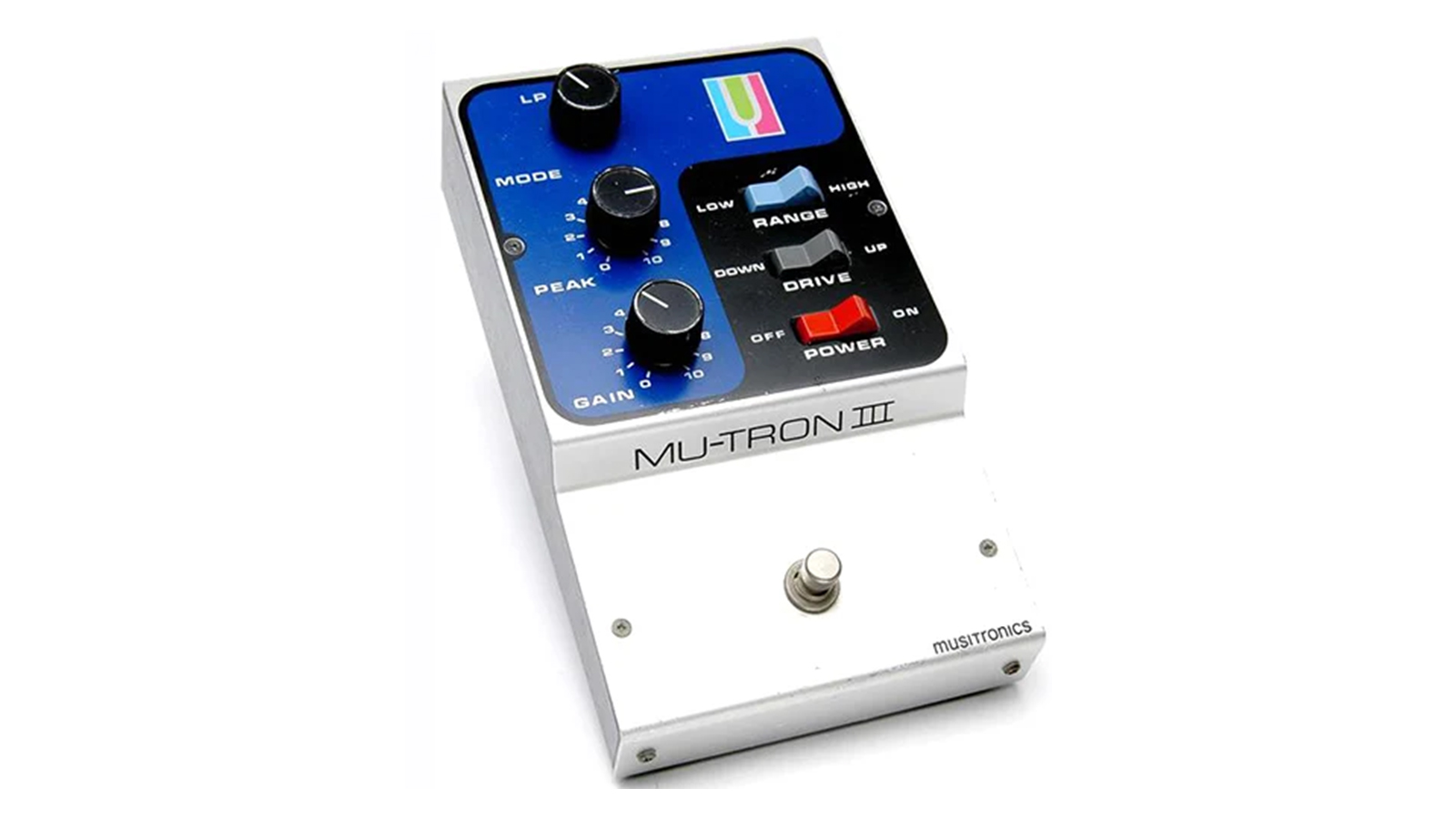
Debut: 1972
Developed for Musitronics by electronics designer Mike Biegle, the Mu-Tron III envelope follower/voltage-controlled filter produced automatic wah effects that changed timbre in response to your playing dynamics. Made famous by Stevie Wonder – who plugged one into a clavinet for the hit “Higher Ground” – the Mu-Tron III was a key element in ’70s funk, and it was also favored by Larry Coryell and Jerry Garcia.
MXR Distortion +

Debut: 1973
This early buzz box – a favorite of Randy Rhoads – used a simple op-amp circuit that provided both insane gain and tube-sounding distortion textures (provided that you made sure to roll off the treble on your guitar and amp). The + was also one of MXR’s most popular effects, selling in excess of 20,000 units per year at its peak.
Buy: MXR Distortion +
MXR Dyna Comp
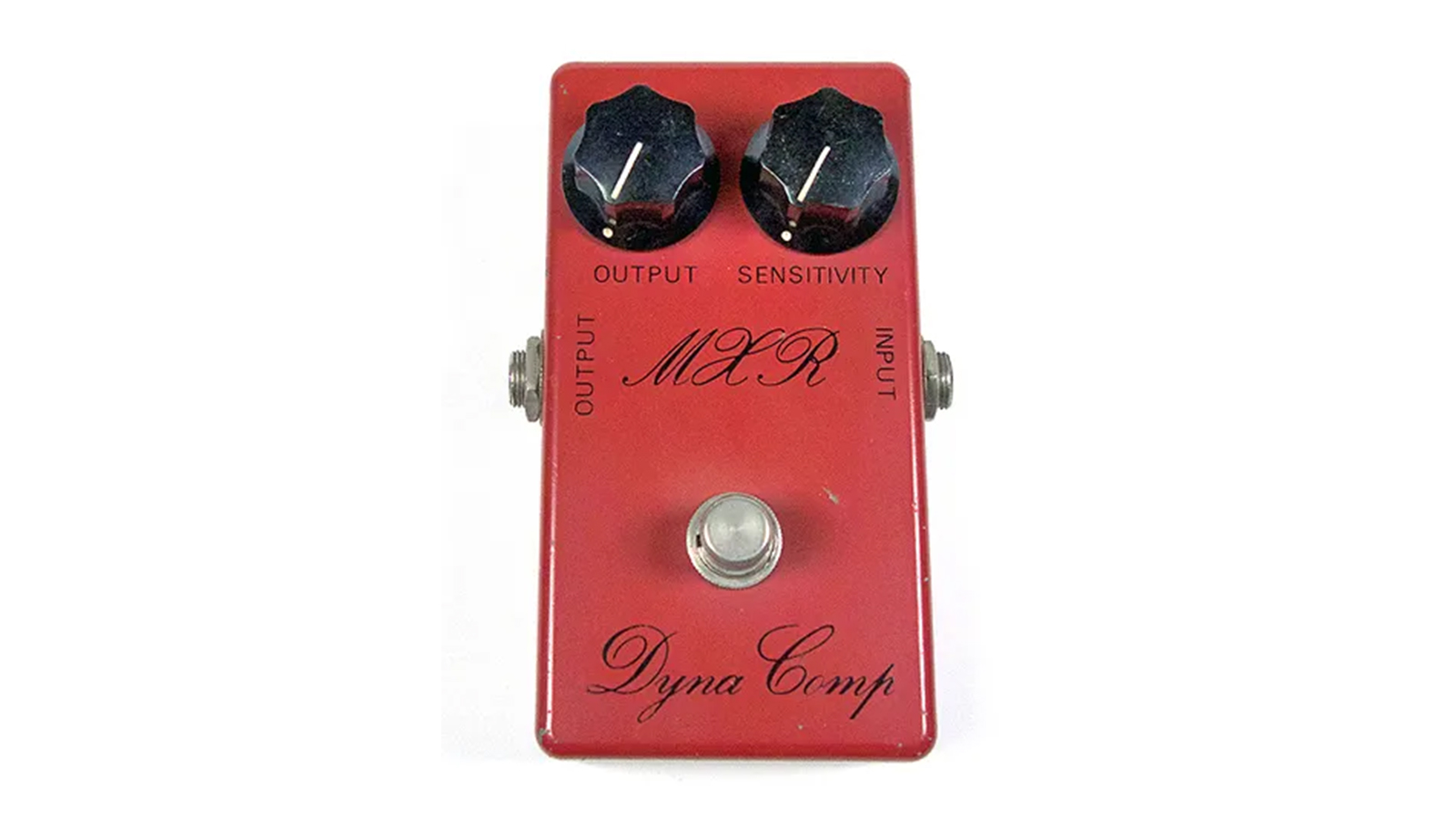
Debut: 1973
Putting the pop in country licks and helping slide parts sound silky smooth has long been a specialty of this king of stompbox compressors. The Dyna Comp was quickly adopted by ace Nashville session players such as Reggie Young and Jerry Reed – who used the script-logo versions on hundreds of hit recordings – and it was also a key tool of slide master Lowell George.
Buy: MXR Dyna Comp
MXR Flanger

Debut: 1980
The moment Eddie Van Halen kicked on this baby for “Unchained” in 1981, the MXR Flanger was guaranteed a place in the stompbox Hall of Fame. Besides delivering deep, powerful swoosh, this AC-powered analog box could delve into chorusing, steel-drum simulations, and other shades of lo-fi lusciousness.
Buy: MXR Flanger
MXR Phase 90

Debut: 1973
This orange box needs just a speed knob to yield complex swirl and cool, rotary-speaker simulations. Another essential ingredient in Van Halen’s classic setup (he set it for a very slow sweep), the Phase 90 is the one to get if you can only have one phaser.
Buy: MXR Phase 90
Prescription Electronics Experience Pedal
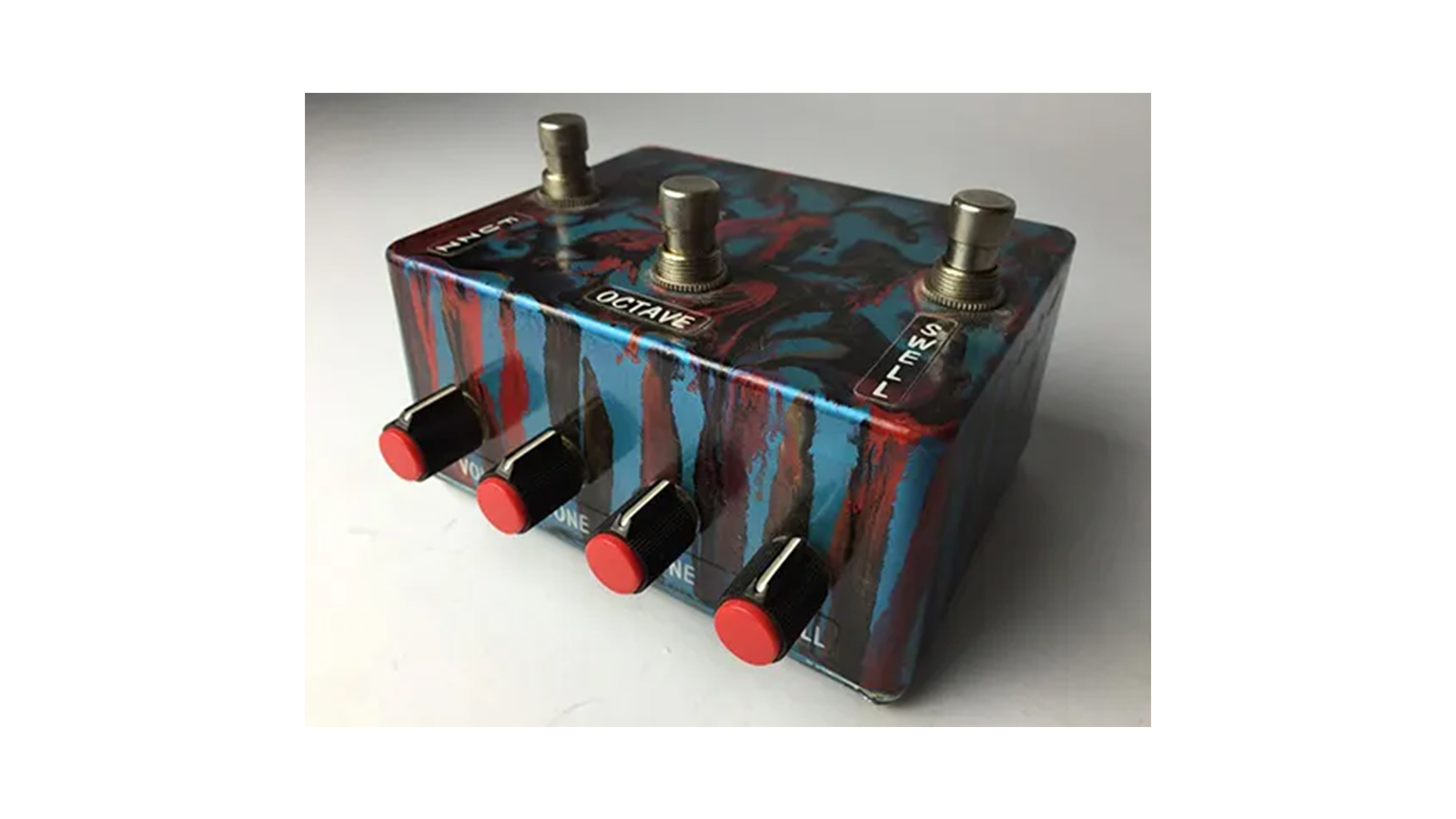
Debut: 1993
This boutique octave-fuzz offers intense sustain, loads of output, and a unique swell circuit that can simulate the effect of playing backwards. The Experience’s soft, wooly octave sound is one of the attributes that makes this pedal a standout.
Pro Co Rat
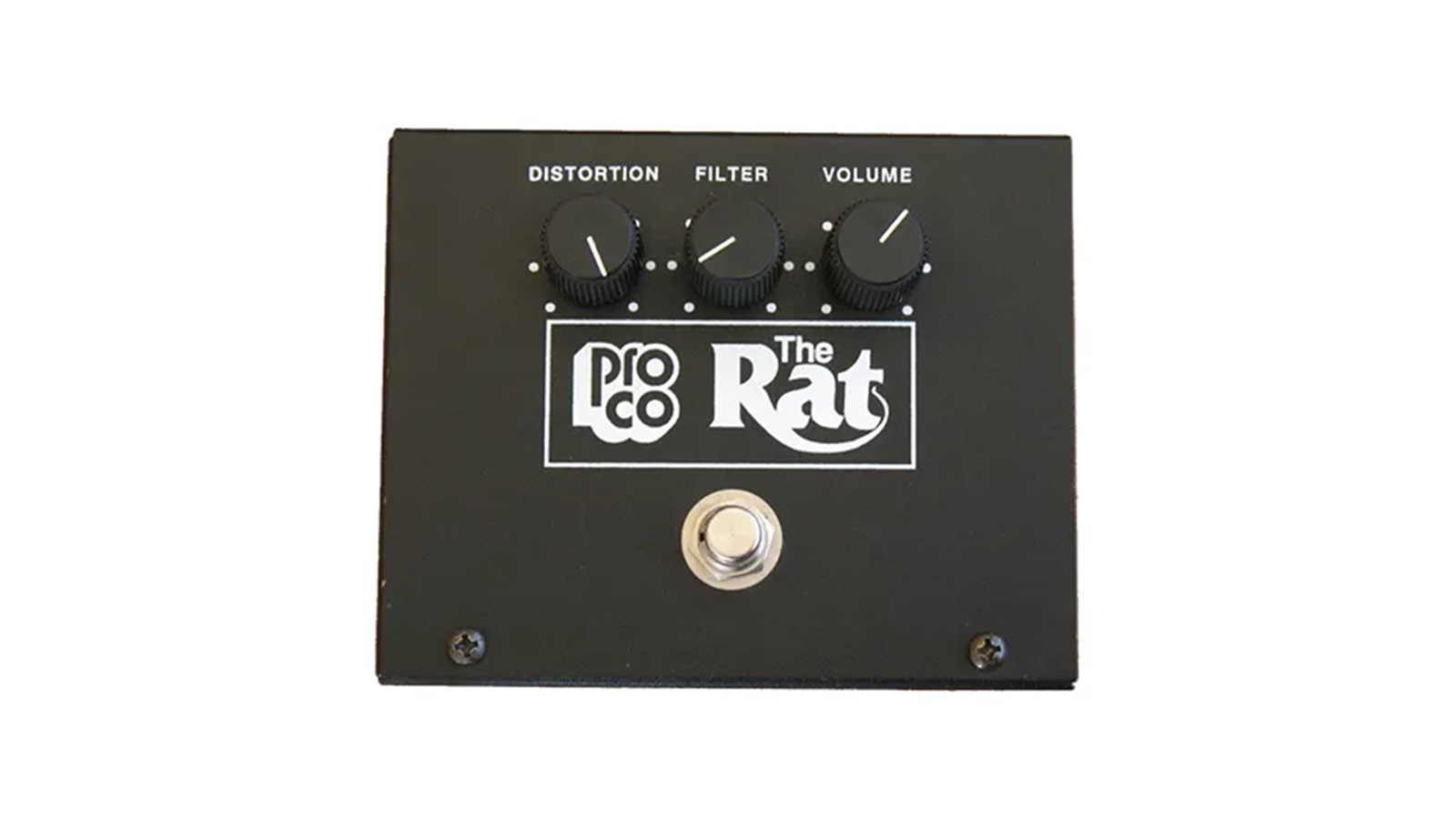
Debut: 1978
The Rat’s distortion and wide-ranging filter controls yield tones that are straight from the Tube Screamer quadrant, but with considerably more gain and bass. Plug into this thing and you’ll understand why Rats infested so many pedalboards in the ’70s and ’80s.
Buy: ProCo Rat 2
Roger Mayer Octavia

Debut: 1966
If Roger Mayer wasn’t the first boutique stompbox builder, he certainly was the most famous. His biggest hit was the Octavia, which delivers a ringing second-octave effect. Mayer recalls that within a few days of hearing the effect, Jimi Hendrix took the Octavia to the studio and plugged it straight into a Marshall for his solos on “Purple Haze” and “Fire.”
Roland AP-7 Jet Phaser
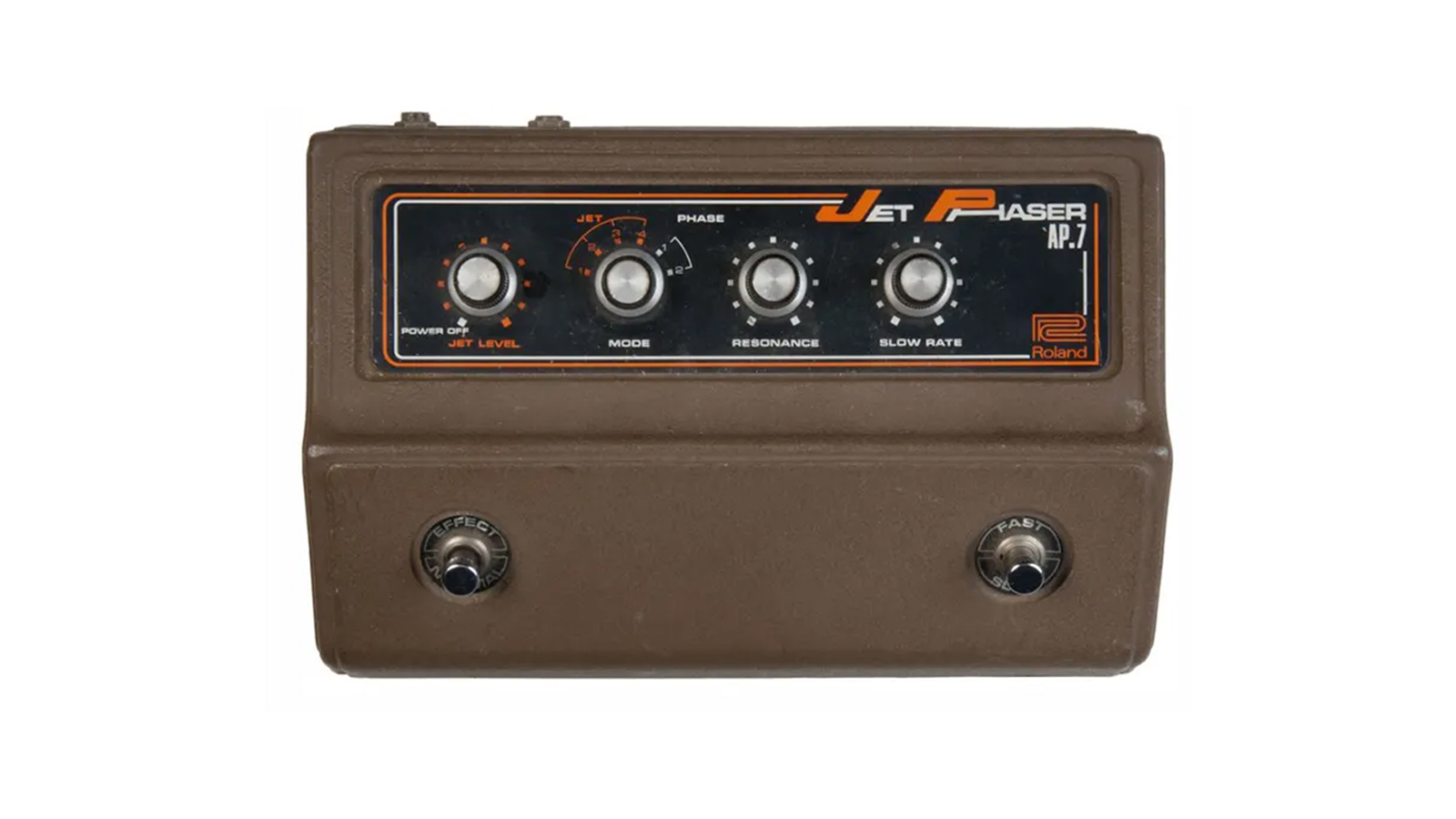
Debut: 1975
Best known for creating the swirling, nasally fuzz sound on the Isley Brothers hit, “Who’s that Lady,” the Jet Phaser combined a multi-setting phase shifter with a fuzz circuit that was probably lifted from Roland’s Bee Baa pedal. The rarely-seen AP-7 packs a bunch of controls and specializes in psychedelic colors that no combination of fuzz and phaser can quite duplicate.
Snarling Dogs Mold Spore Psycho-Scumatic Wah
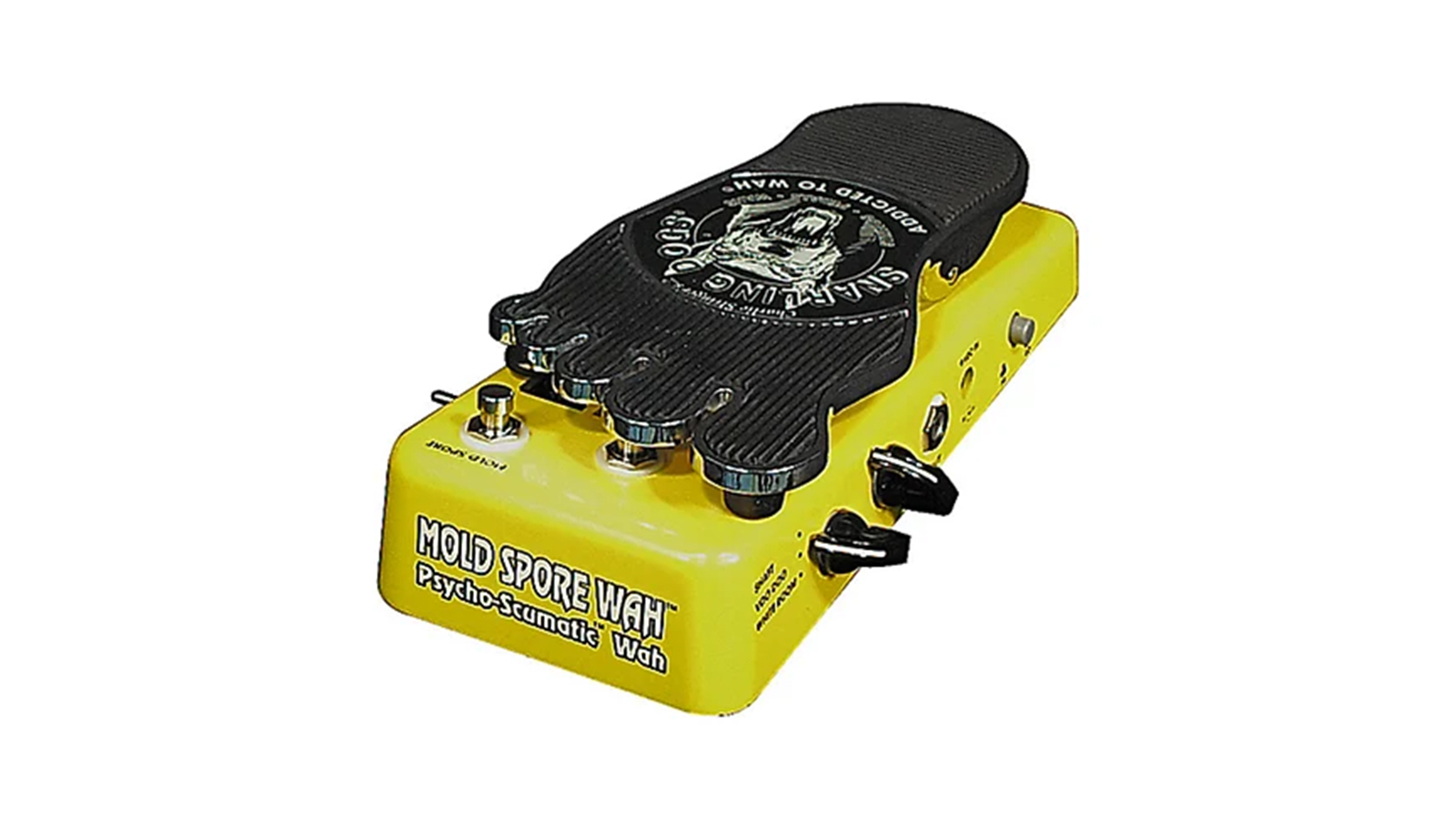
Debut: 1999
It’s easy to believe that a pedal packing wah and ring modulation would be pretty extreme. But even those who think they’ve heard everything will likely be blown away once they start messing with this baby’s Freakwincy, Psychoscumation, and Straightjacket controls – not to mention the Freak Sweep button, which allows for foot control of the ring modulation center-point. Bottom line: If you want to show you’re nuts, this is the pedal to do it with.
Strymon BigSky

Debut: 2014
A truly modern classic, the BigSky reverb brings heavenly-sounding reverb down to earth and places it firmly at the feet of guitarists. Underneath the bonnet the BigSky boasts a whopping 12 studio-quality reverb machines ranging from the traditional Hall, Room, Spring, and Plate to more progressive modes such as Chorale, Shimmer, and Nonlinear. Each reverb type is selected via a rotary knob for quick access. A further eight dials are available for swift, easy tweaking.
Buy: Strymon BigSky
T.C. Electronic Stereo Chorus Pitch Modulator & Flanger
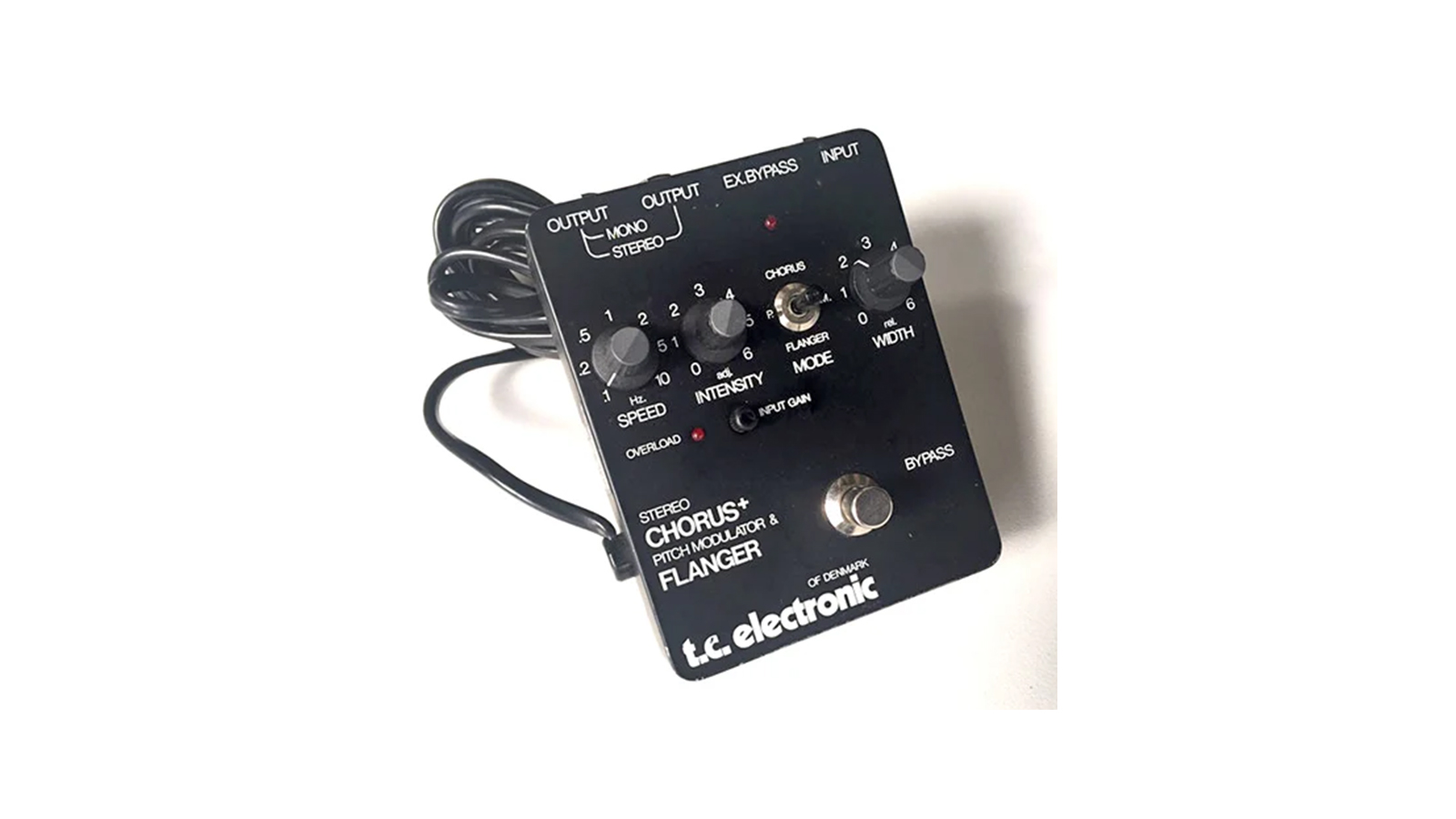
Debut: 1982
Lots of players consider this Danish-made unit to be the ultimate chorus pedal – and it’s great for Leslie-style tones, too. Thanks to a beautifully designed analog circuit that delivers a 20Hz-20kHz bandwidth and imposes a noise-gate on the wet signal, the T.C. is one of the clearest and quietest chorus boxes ever made.
Tech 21 SansAmp
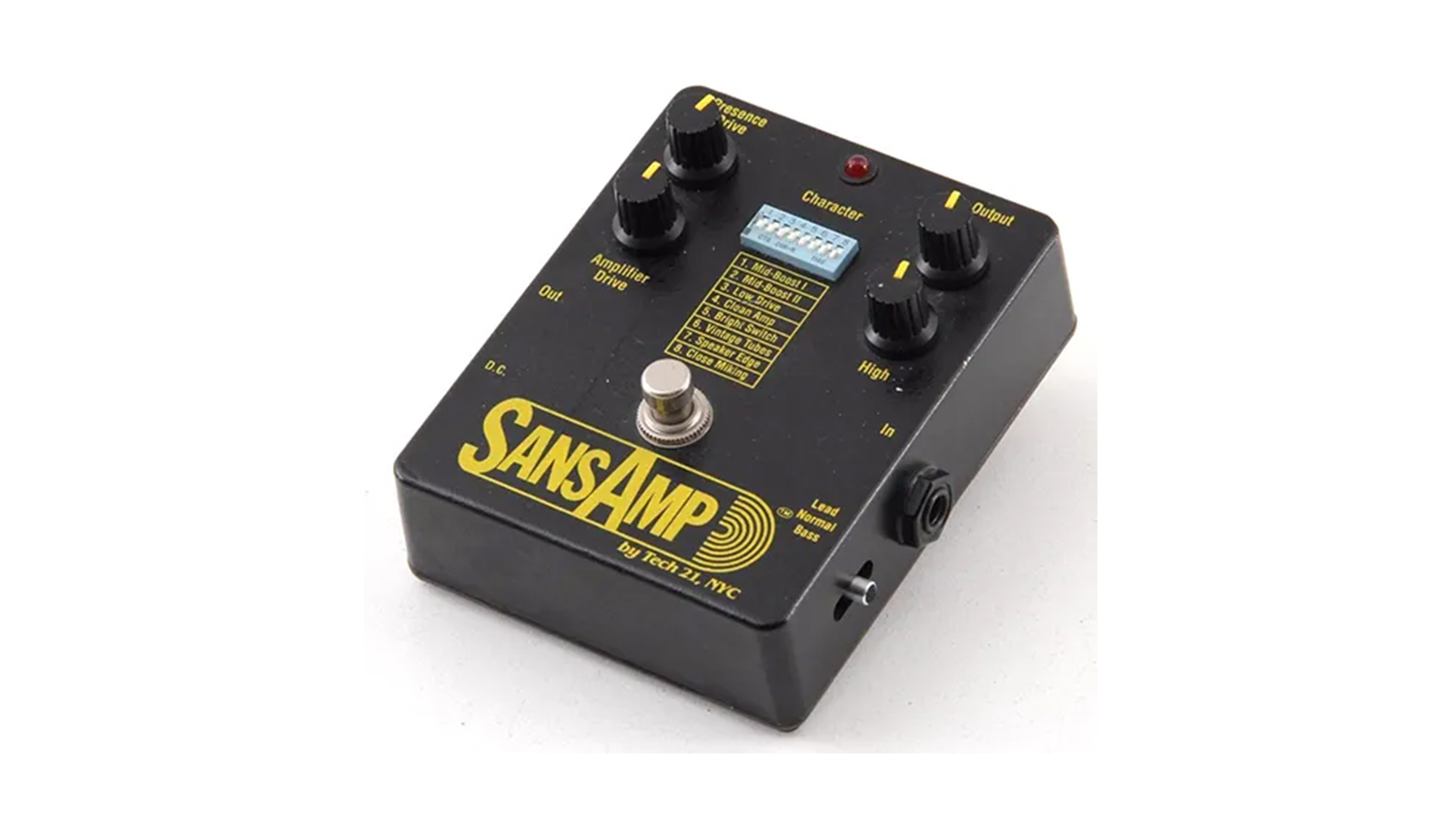
Debut: 1989
This brainy D.I. device uses analog circuitry to simulate the sounds of different amplifiers in clean and distorted configurations. The SansAmp’s eight character switches – which can be used individually or in combination to do such things as boost mids, alter the treble response, and enhance the lows – are at the heart of this studio-oriented device’s chameleon-like powers. Kurt Cobain used a SansAmp onstage.
Tube Works Tube Driver
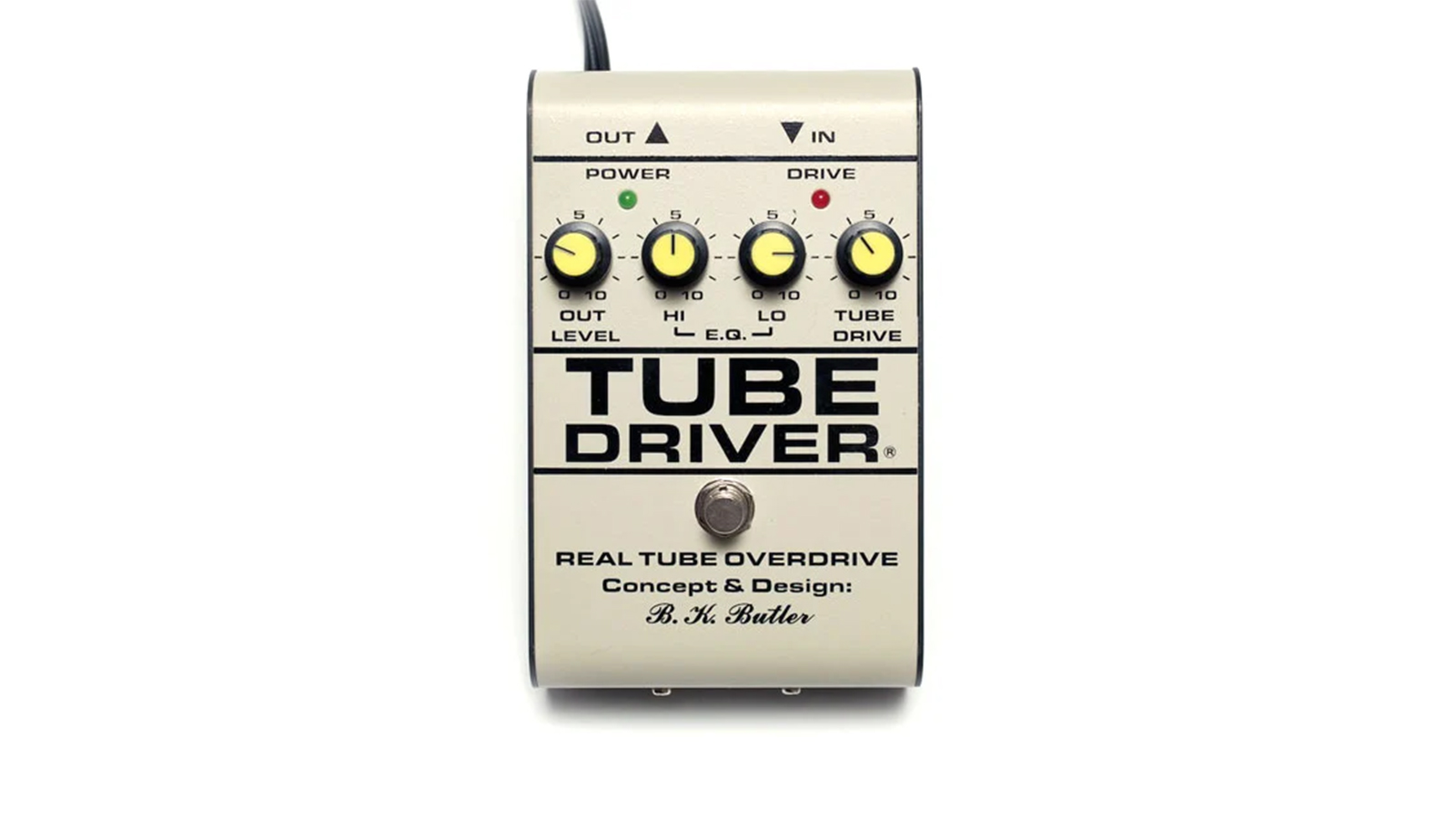
Debut: 1979
The Tube Driver has at least three distinctions: It was the first distortion pedal to use a real tube, it was designed by a keyboard player (Brent Butler), and it was made famous by Eric Johnson (who used one straight into a Marshall for his lead sound). Several versions of this box were made, and the four-knob models built by Butler for Chandler are generally considered the best.
Tycobrahe Octavia
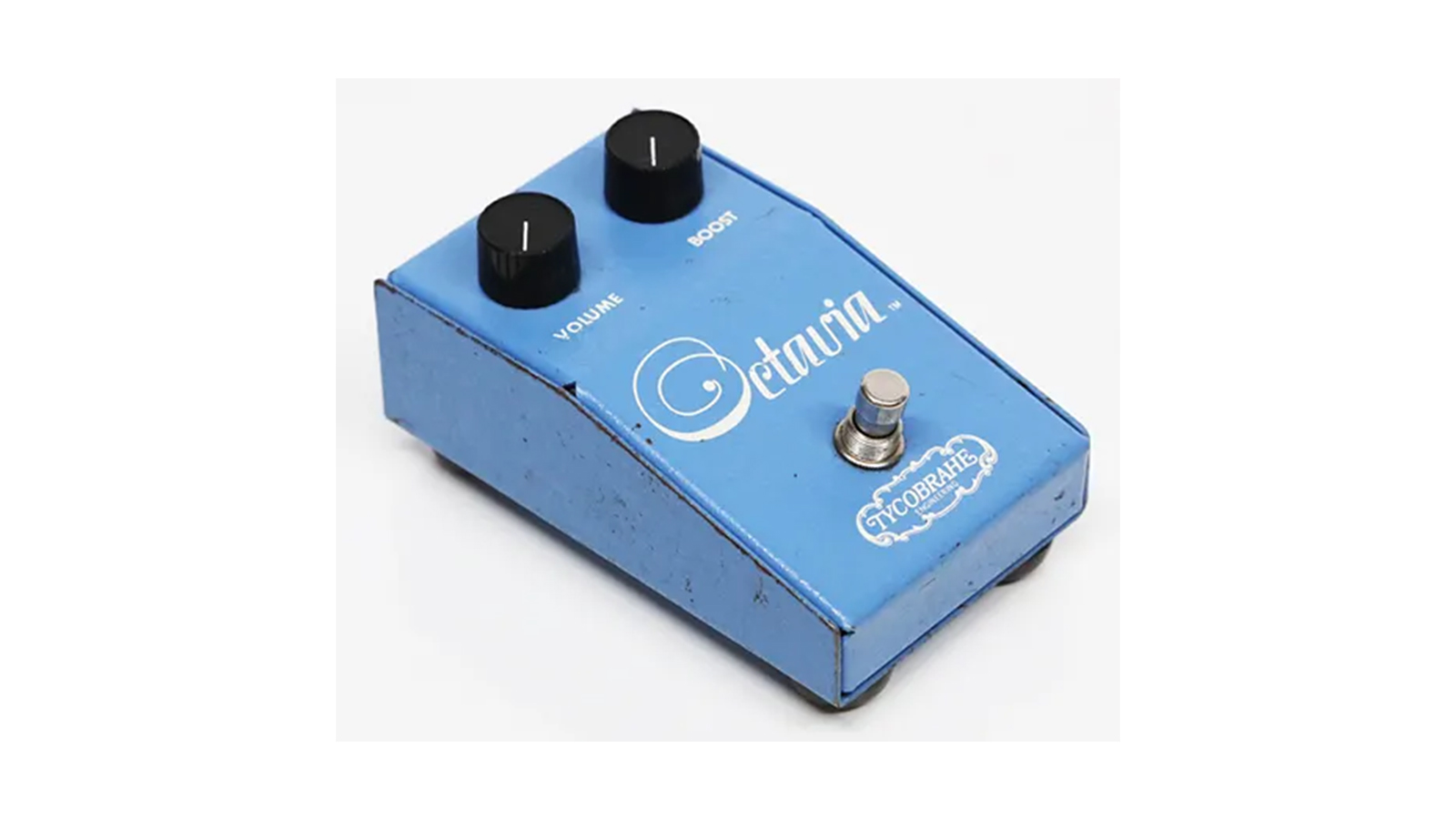
Debut: 1970
In the beginning, there were only two ways to get an Octavia: you could become a rock star and get it directly from Roger Mayer, or you could purchase a Tycobrahe clone. The tale of two Octavias began when bassist Noel Redding brought one of Jimi Hendrix’s broken units to the Tycobrahe folks to be repaired. The rest, as they say, is history.
Univox Uni-Vibe

Debut: 1969
Another stompbox made famous by Hendrix is the Uni-Vibe – an early rotary-speaker simulator that used a pulsating light source and four photo resistors to modulate its four-stage phase-shifting circuit. It’s primitive technology, but what would Band of Gypsys be without the Uni-Vibe’s thick, smoky swirl? Or, for that matter, Robin Trower?
Voodoo Lab Sparkle Drive

Debut: 2000
What makes this distortion/overdrive pedal special is its ability to simulate the layering effect of two amplifiers. The Sparkle Drive’s key feature is its clean knob, which lets you add boosted clean signal to the distortion sound to enhance clarity and detail.
Vox Cry Baby
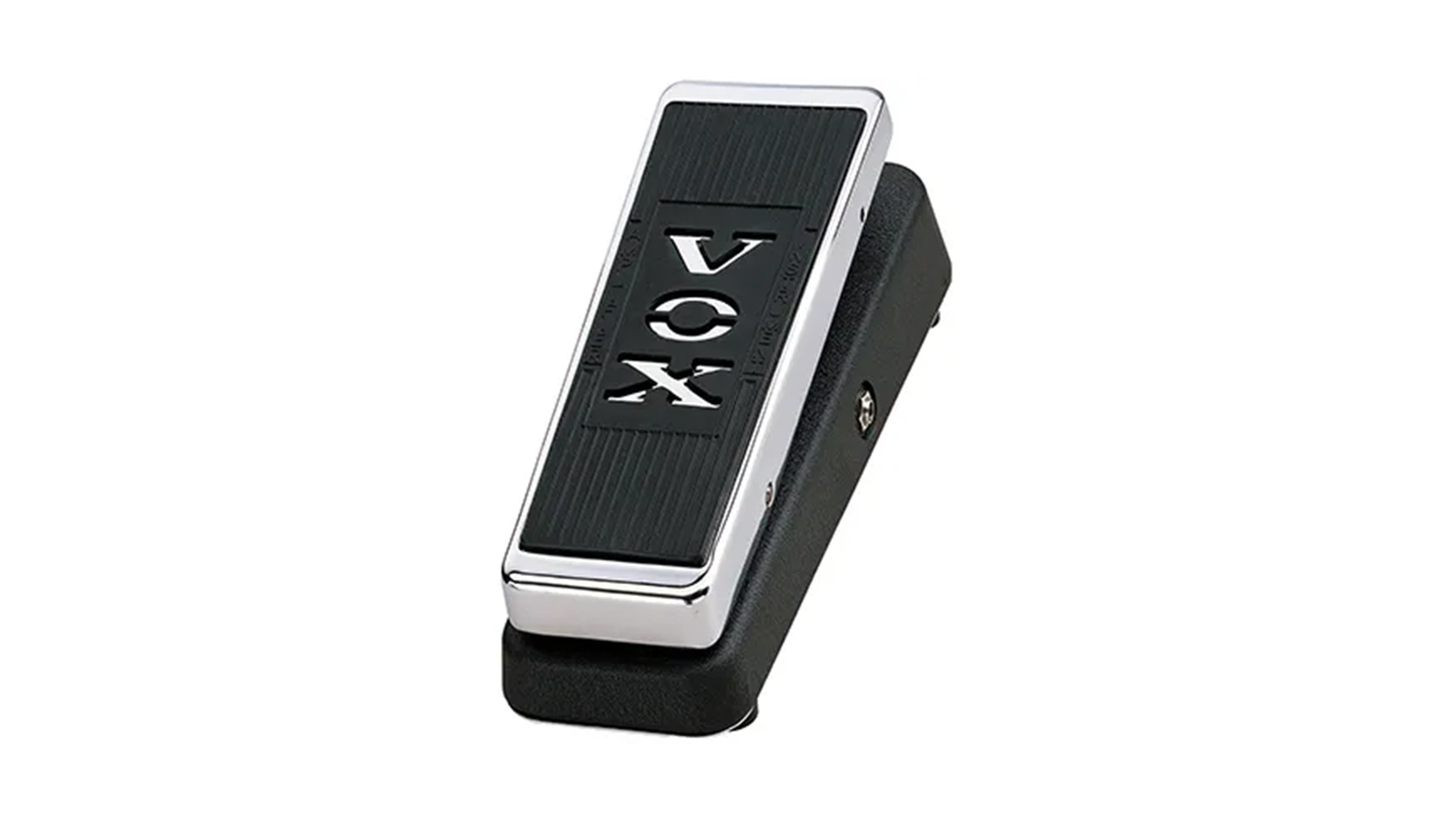
Debut: 1967
Hendrix was the first and most famous to jump on this essential effect – which was invented by a Thomas Organ engineer named Brad Plunkett. The CryBaby’s distinctly vocal inflections are irresistible to humans, who have used the device with impunity on practically every style of music ever since.
Vox Tone Bender

Debut: 1967
This classic British fuzz was Vox’s answer to the Maestro Fuzz-Tone. Listen to Jeff Beck’s exotic-sounding guitar work on “Over Under Sideways Down,” and you’ll get a pretty good idea of why the Tone Bender is legendary.
Way Huge Blue Hippo
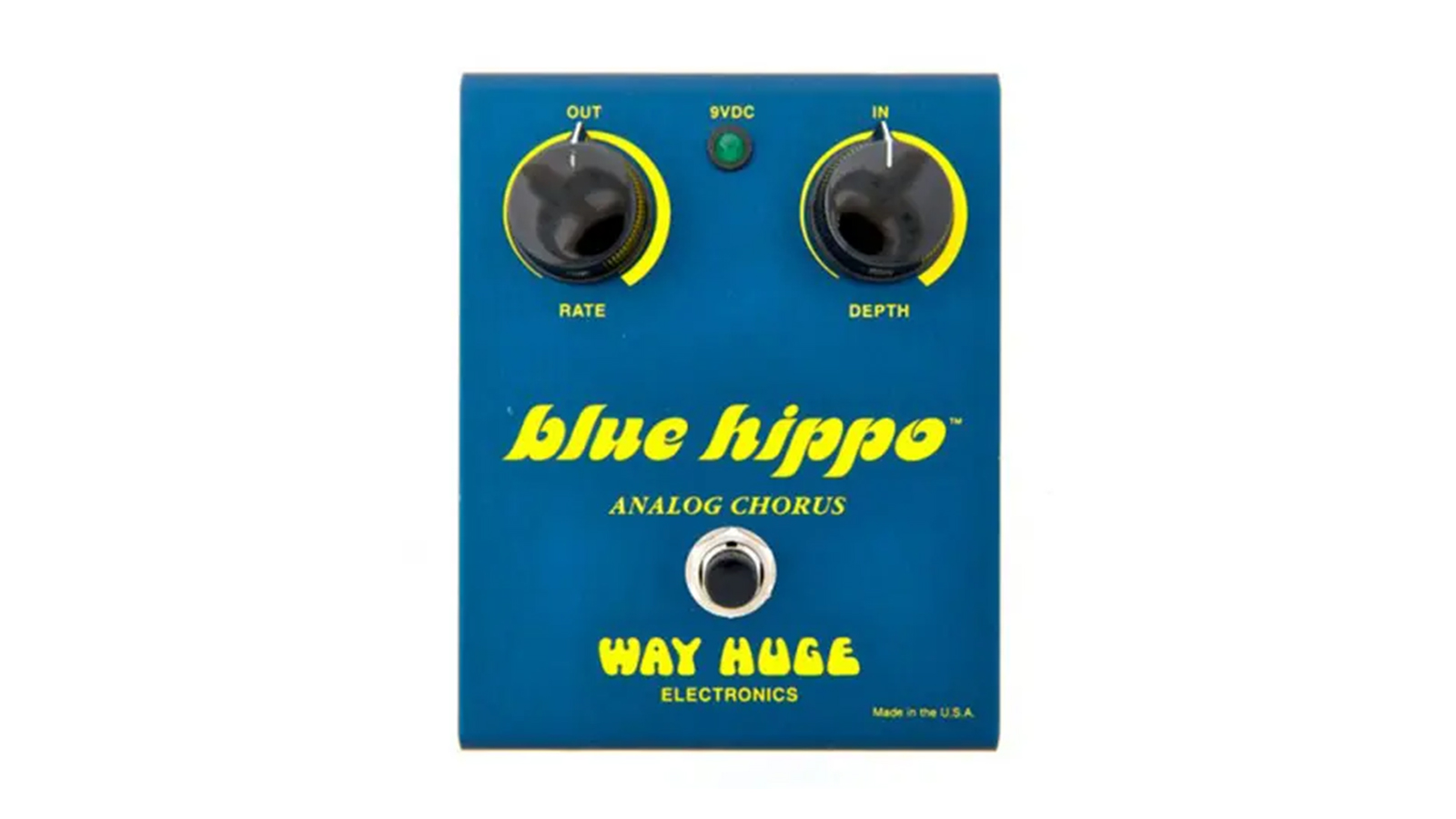
Debut: 1998
Broad, rich chorusing and the ability to preserve the tonality of your guitar make the Blue Hippo a heavyweight of the analog jungle. This is one chorus you can really lay into without feeling like you’ve dunked your tone in a muddy Muzak watering hole.
Way Huge Swollen Pickle
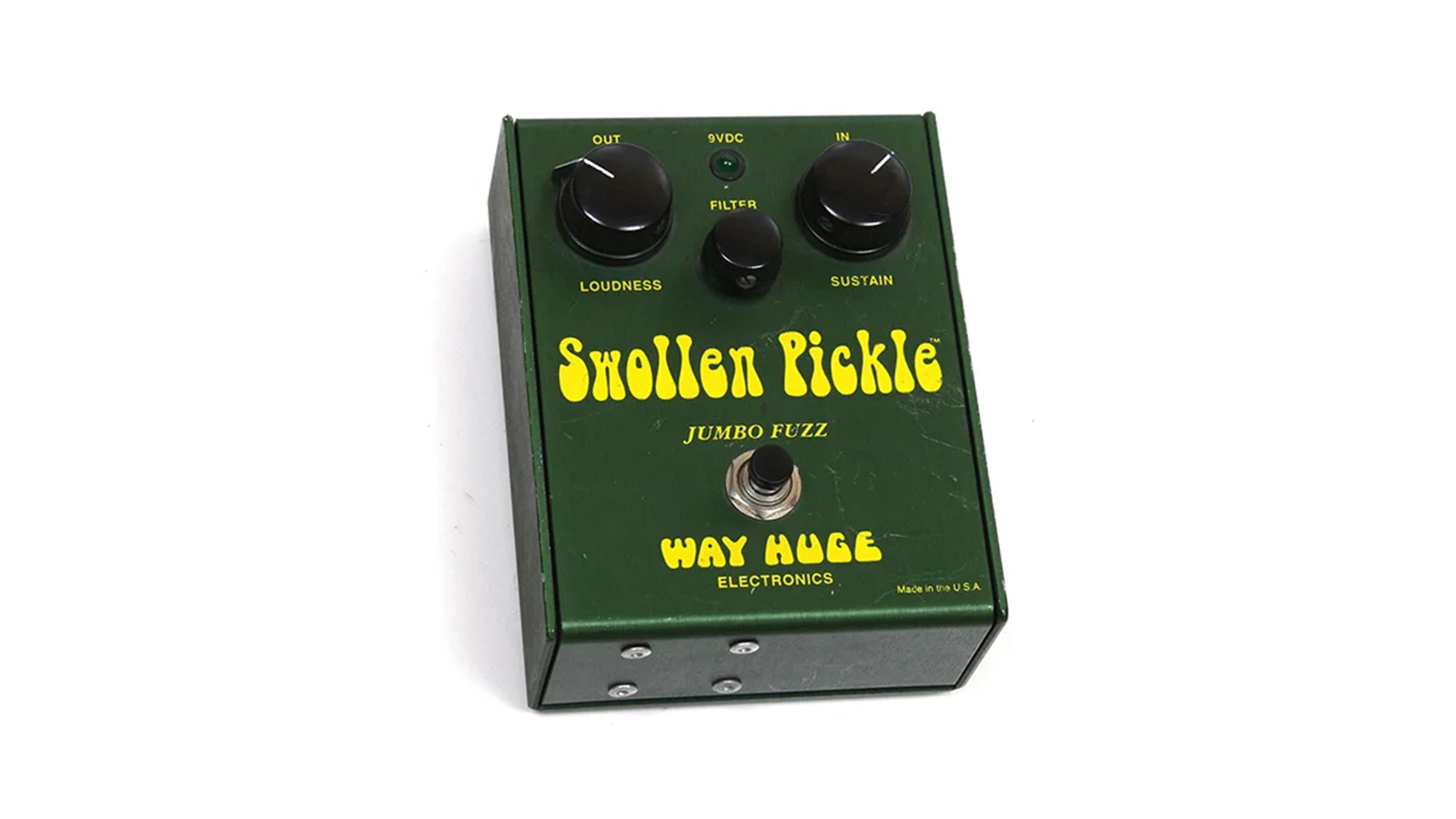
Debut: 1996
Though one of the most corpulent-sounding fuzzes, this herkin’ gherkin can also deliver explosive treble bite.
Buy: Way Huge Swollen Pickle
Z.Vex Fuzz Factory
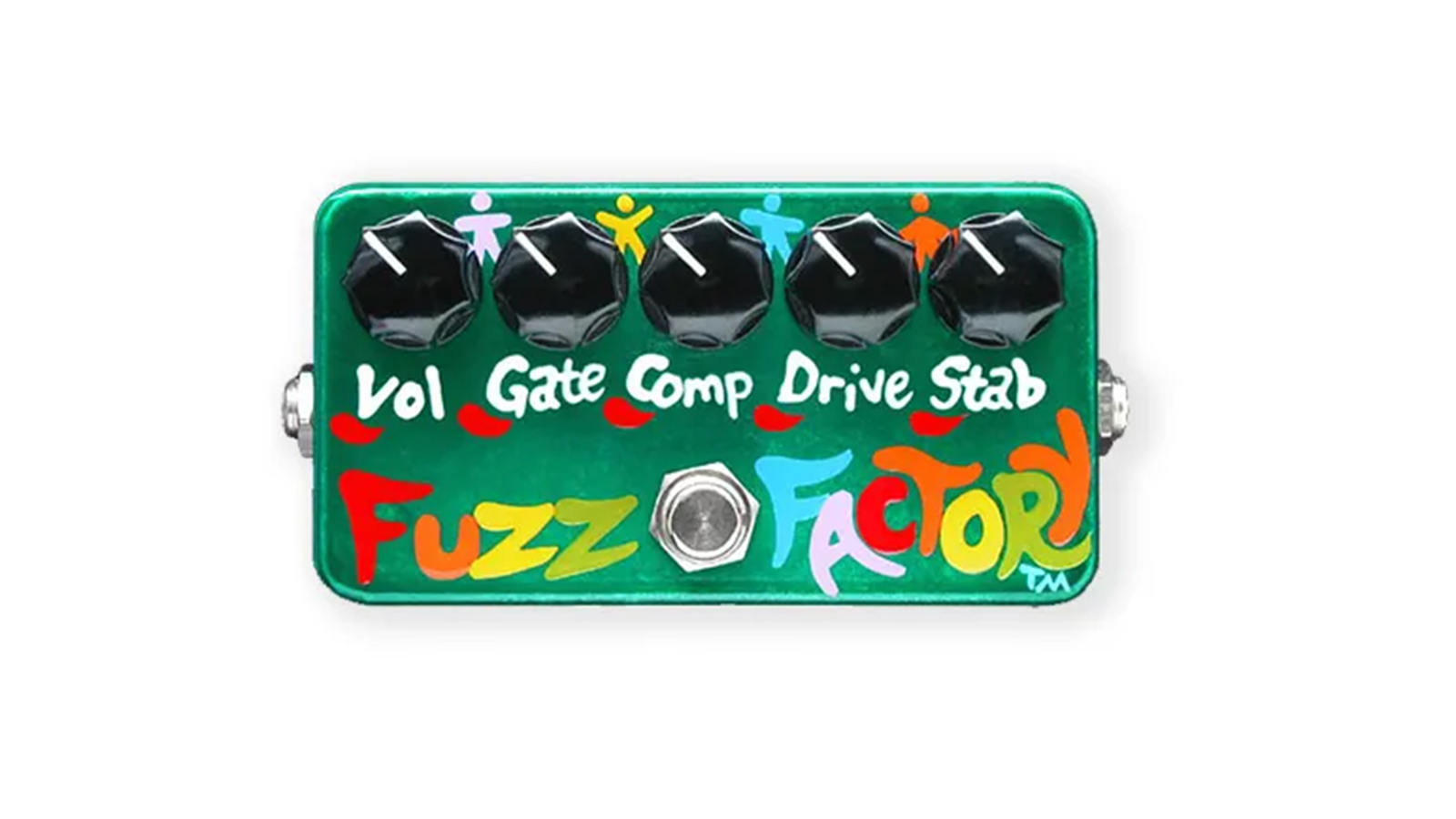
Debut: 1995
Featuring volume, gate, comp, drive, and stab controls, the Fuzz Factory produces everything from classic, Beck/Clapton-style buzz to animal squeals, garbled spacecraft chatter, and dying-transistor sputters. This is one of the widest-ranging fuzzes of all time.
Buy: Z.Vex Fuzz Factory
Z.Vex Seek Wah

Debut: 1996
Packing eight individually tunable, sequentially driven wah circuits (which can be set to fire in four-, six-, or eight-voice patterns), the Seek Wah is well equipped to produce such trippy effects as modulated-wah tremolo, oddball-sounding arpeggios, and myriad dialects of robot speak.

Art Thompson is Senior Editor of Guitar Player magazine. He has authored stories with numerous guitar greats including B.B. King, Prince and Scotty Moore and interviewed gear innovators such as Paul Reed Smith, Randall Smith and Gary Kramer. He also wrote the first book on vintage effects pedals, Stompbox. Art's busy performance schedule with three stylistically diverse groups provides ample opportunity to test-drive new guitars, amps and effects, many of which are featured in the pages of GP.
